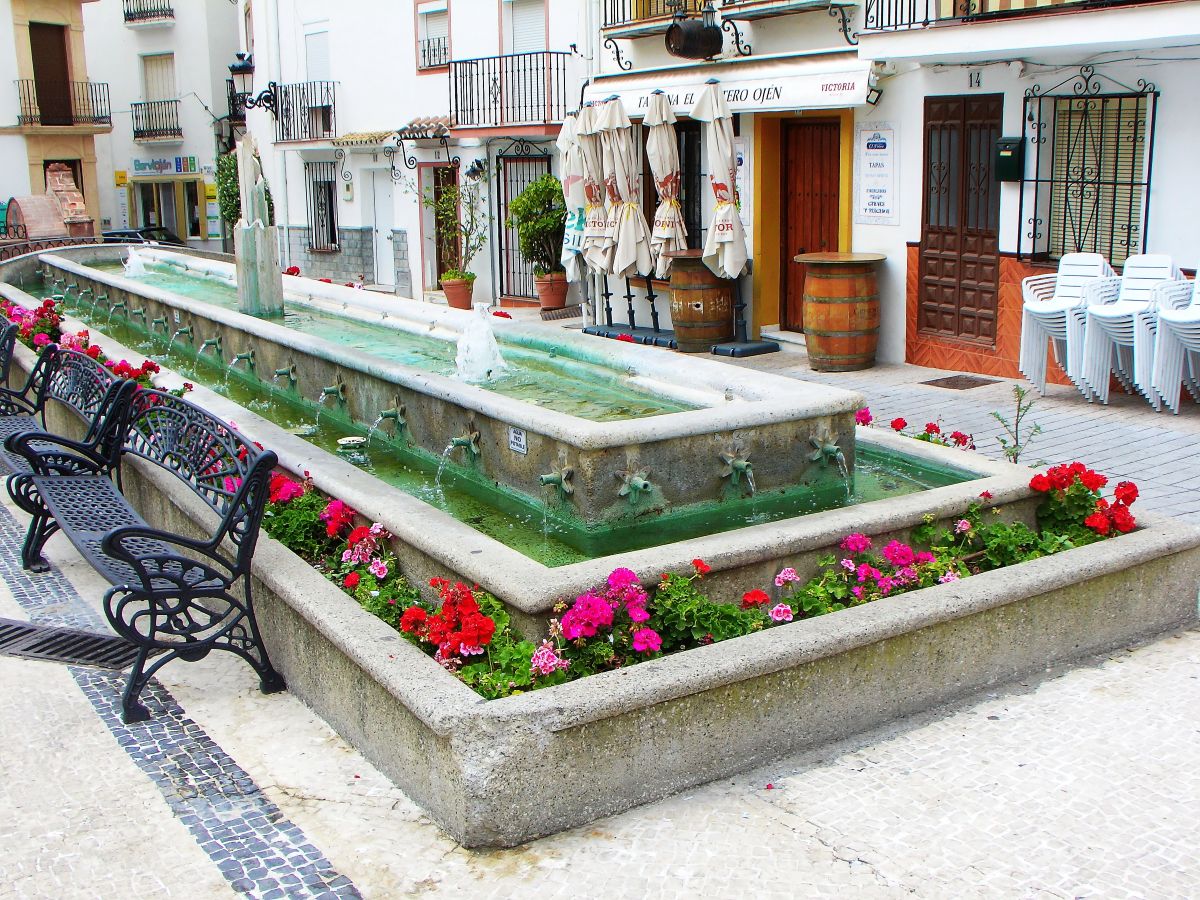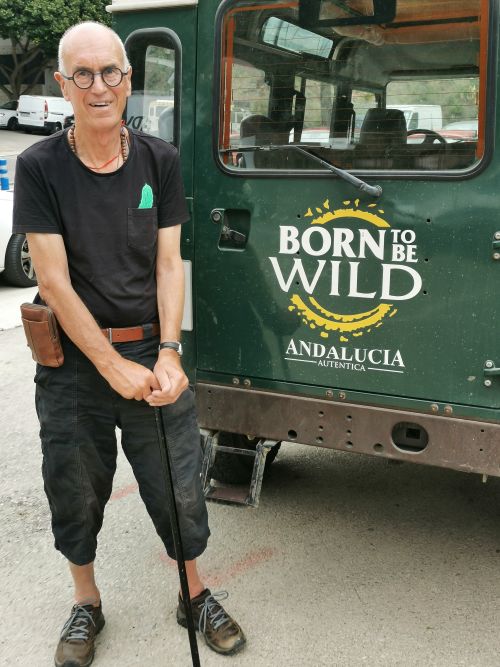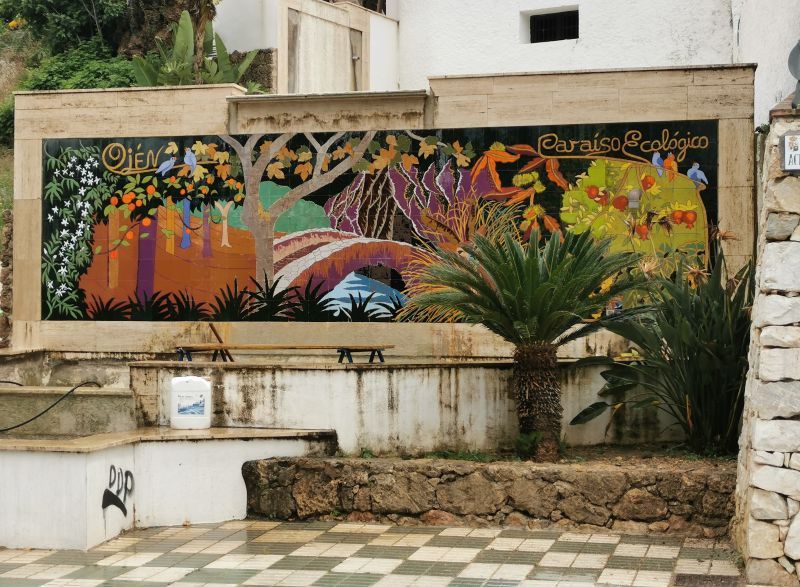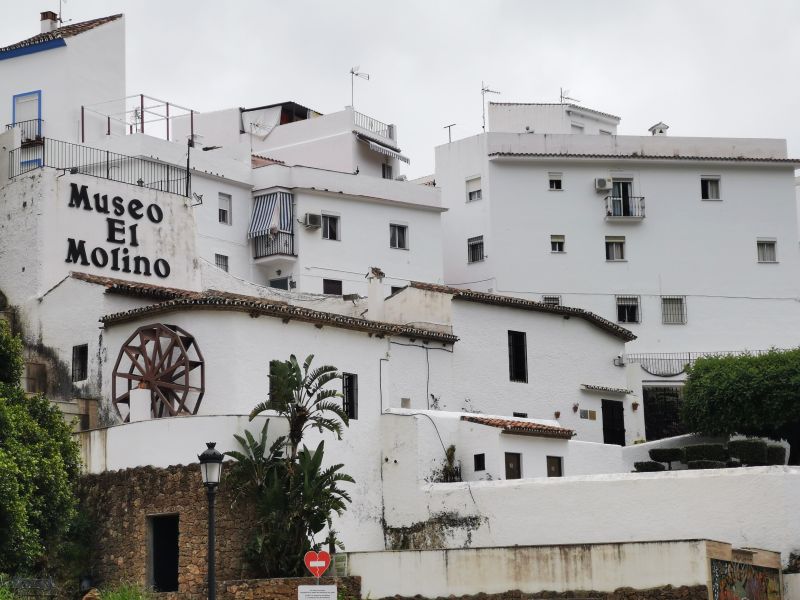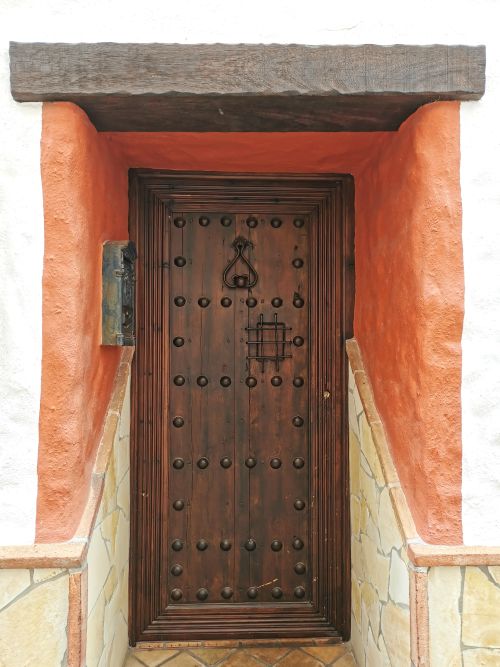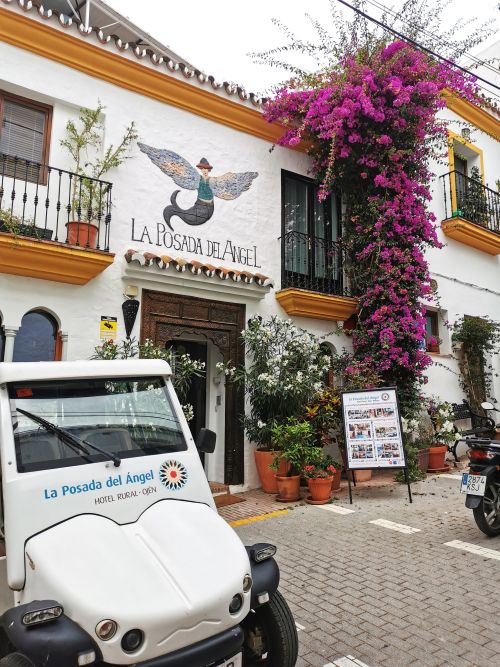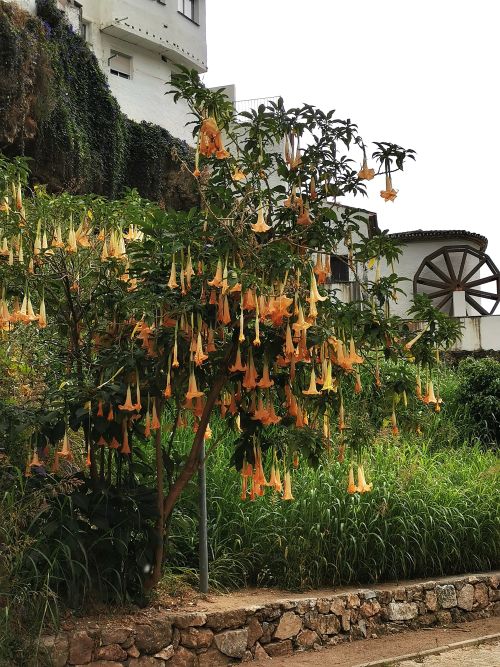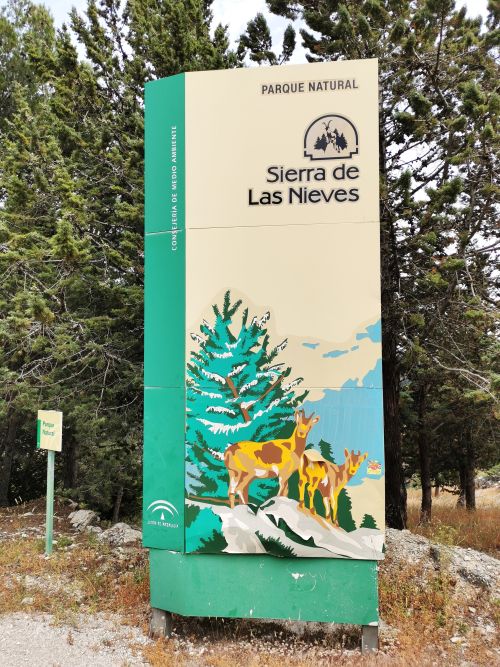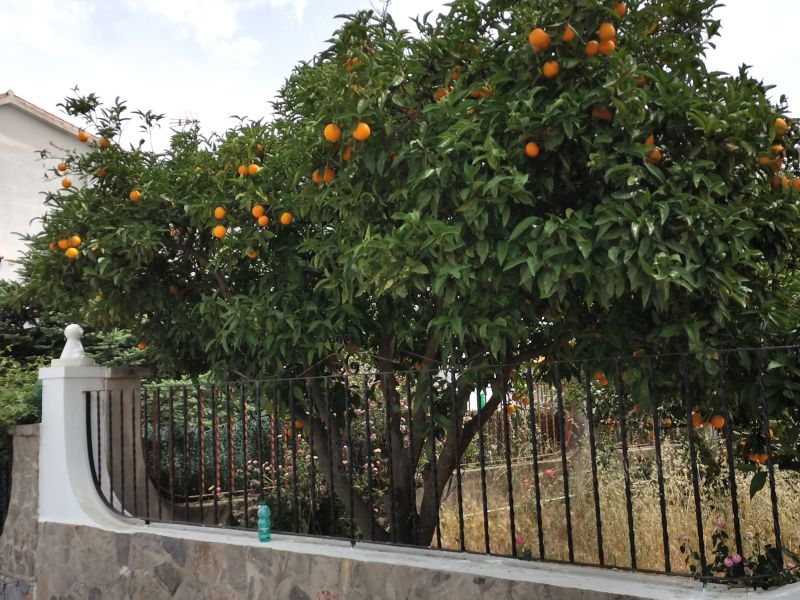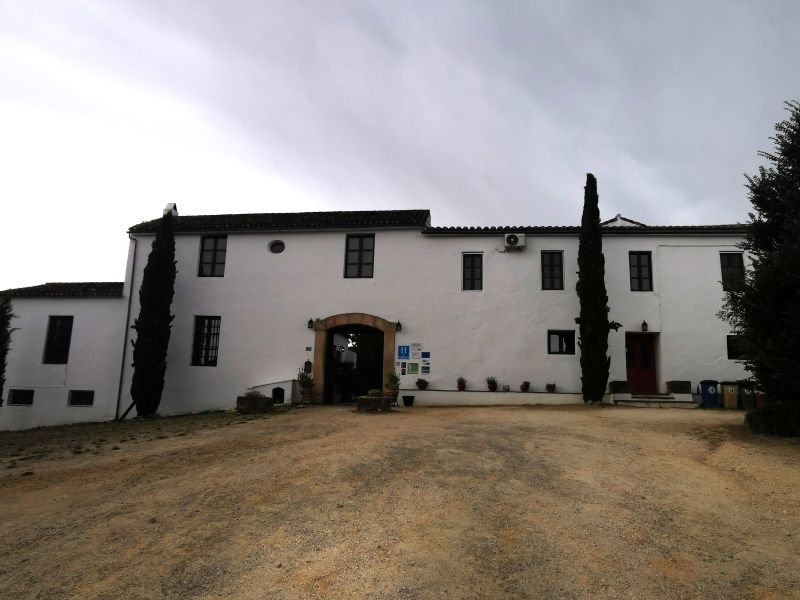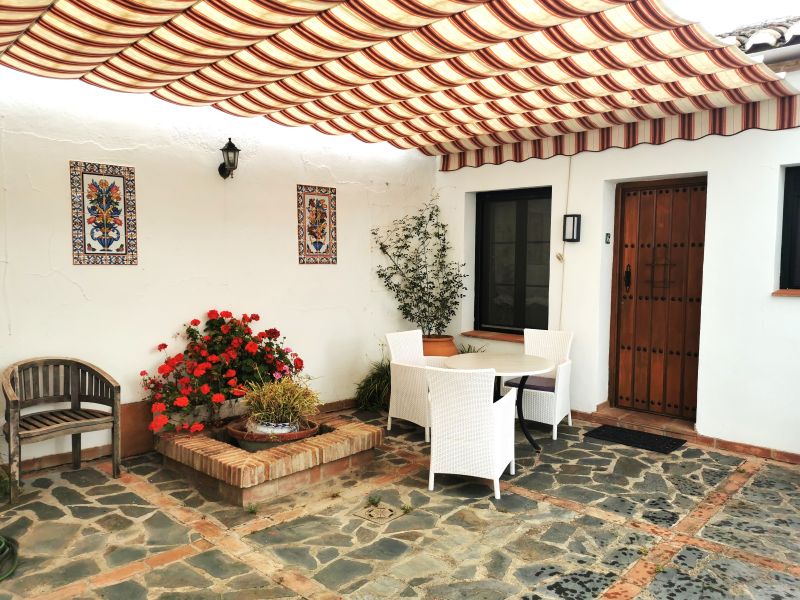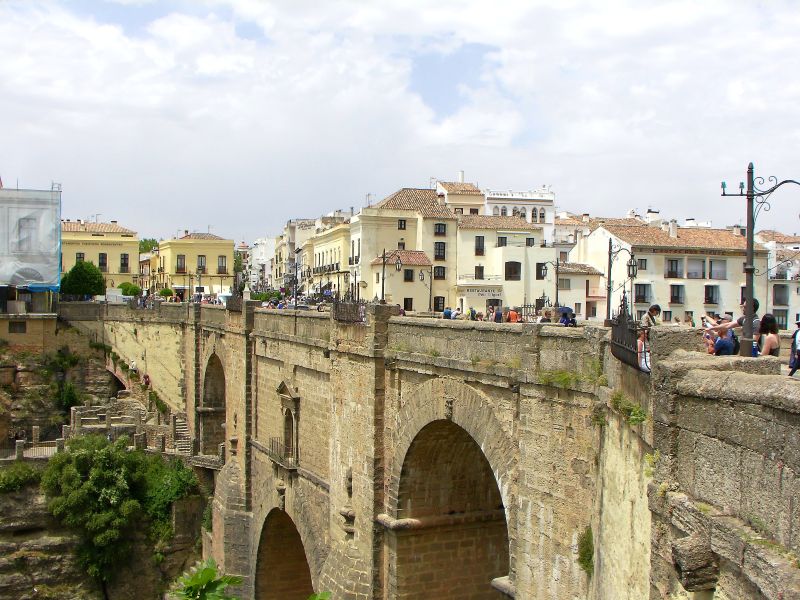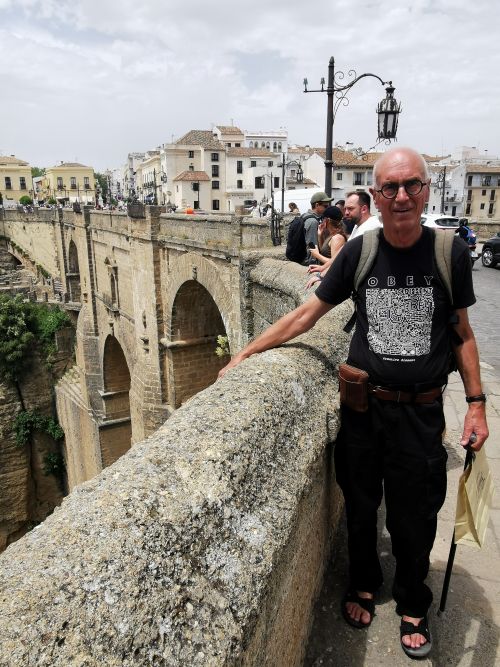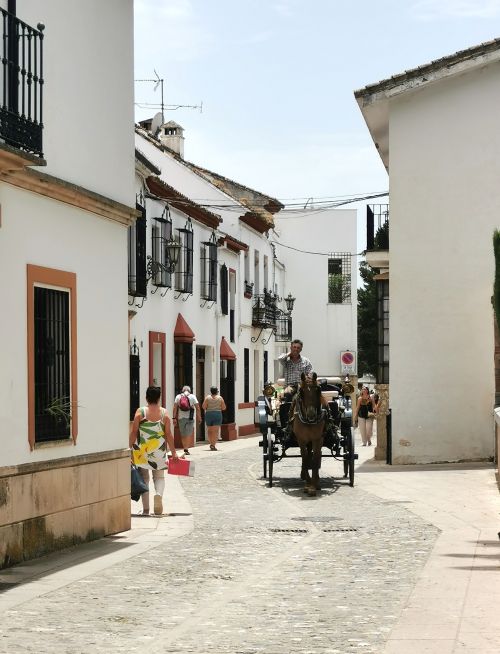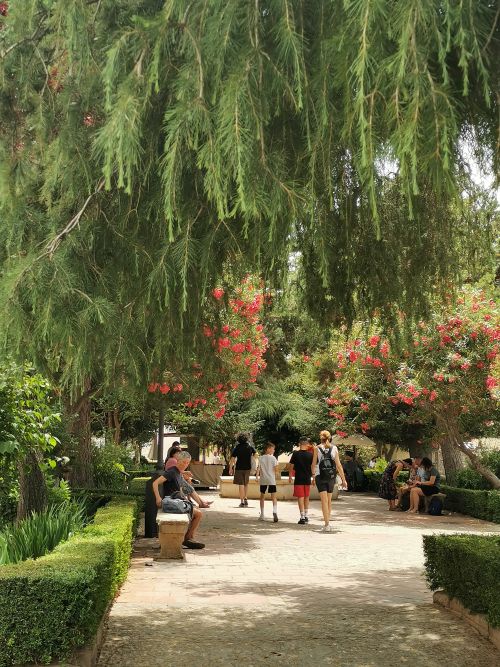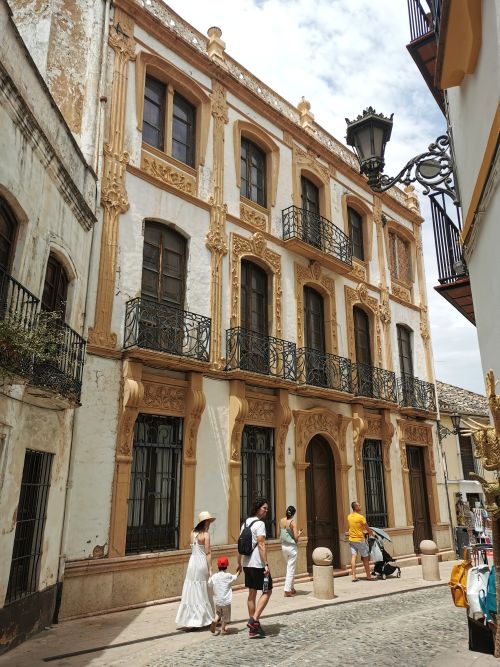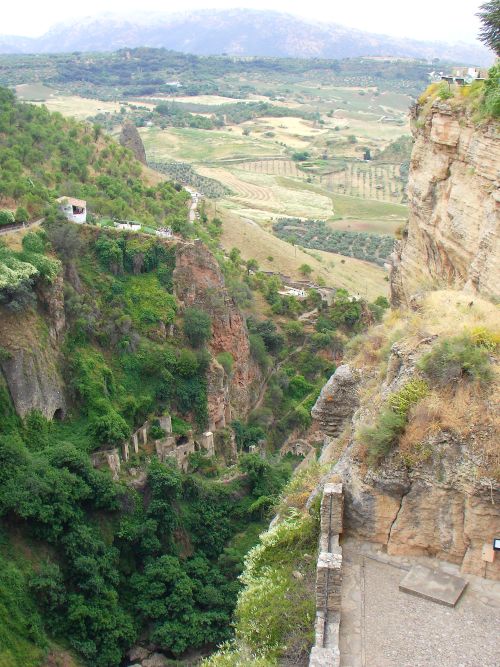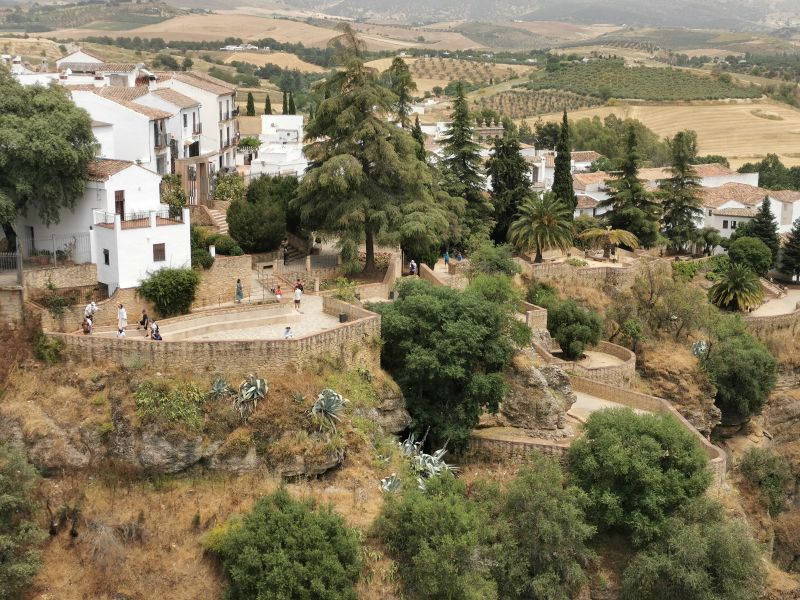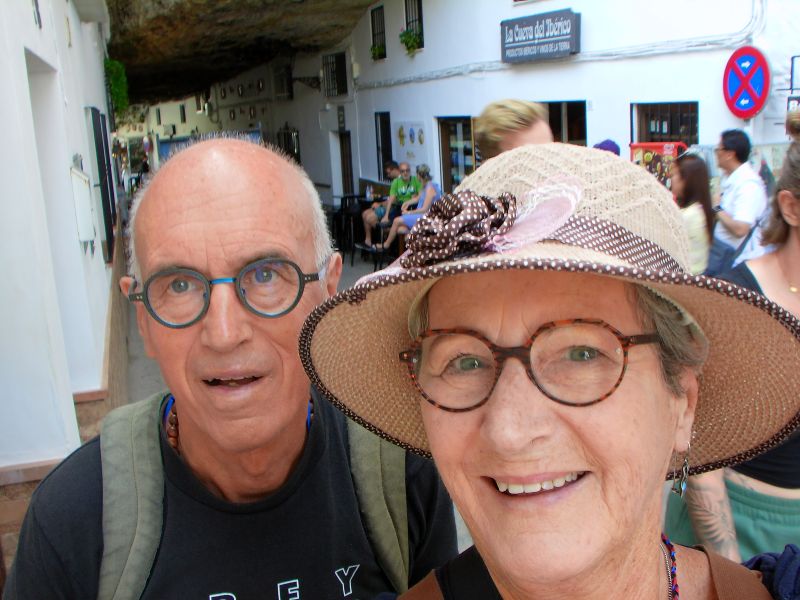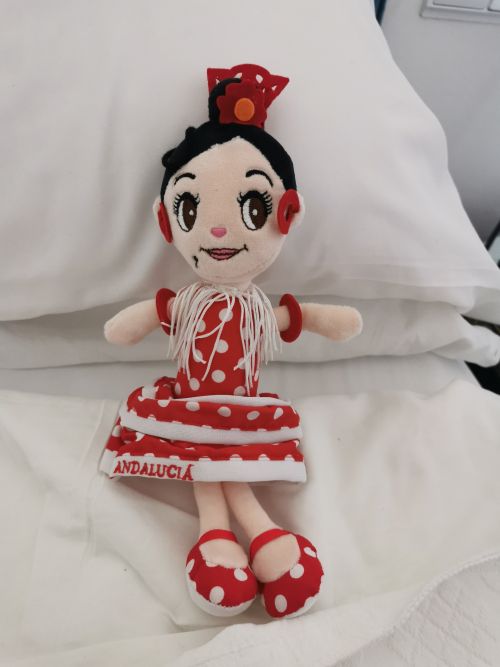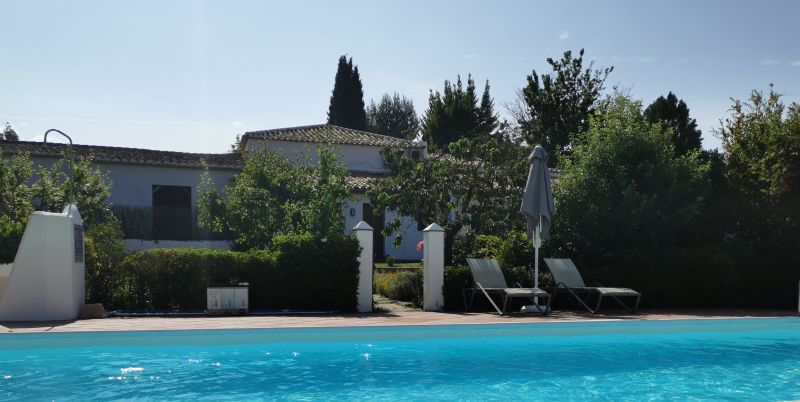Once again I wish to acknowledge and thank my wonderful friend Shoba Nayar who edits my writing, and who’s careful eye and amazing suggestions helps bring alive stories from our travels!
Where in the world are we? Spain!
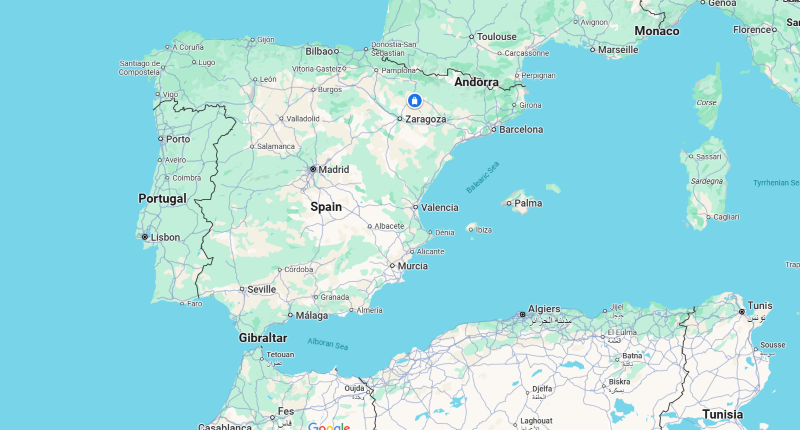
Destinations for this journey!
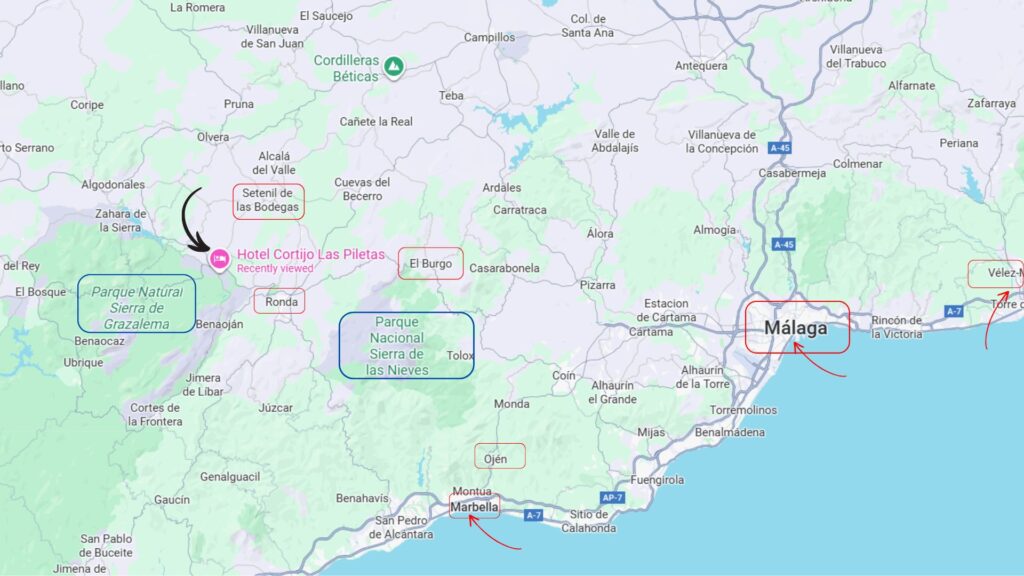
The road to Ronda
With our destination being a Cortijo, a traditional farmhouse near Ronda, we left the highway at Marbella. Our first port-of-call was Ojén, a lovely village hanging off the side of a hill at about 200m above sea level. Driving the steep highway away from the crowded coast to the less populated and stunning mountainous interior of the region of Málaga, Ojén radiates a brilliant white, beckoning people to visit.
Remember to open up the groups of photos to see them fully!
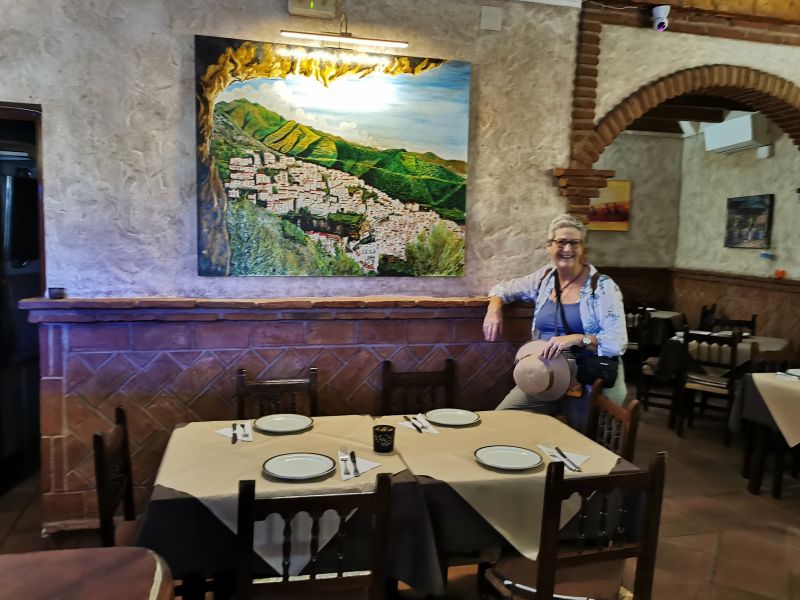

A painting on the wall of the restaurant El Tunel in Ojén
Exploring Ojén
We pulled into the car park and chose our walking route up into the town. It was nice to wander among the narrow streets of white houses, cactus and flowering pot plants, archways and colourful doors, as we made our way to the town square. Manfred chatted in Spanish to a local lady who suggested restaurants, where to find the church, and another square with what turned out to be a stunning fountain.
Remember to open up the groups of photos to see them fully!
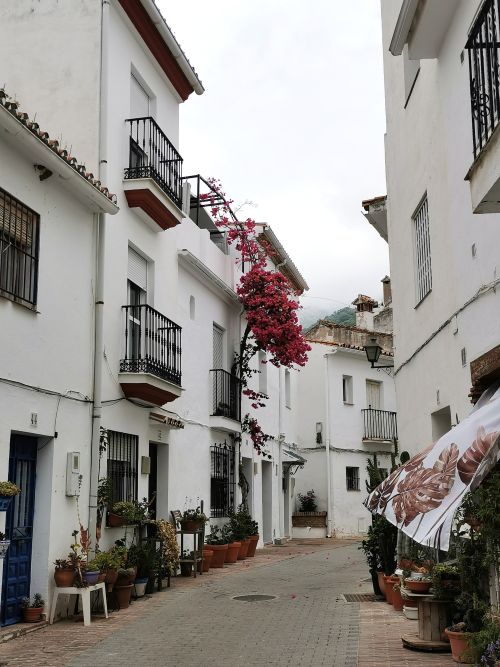
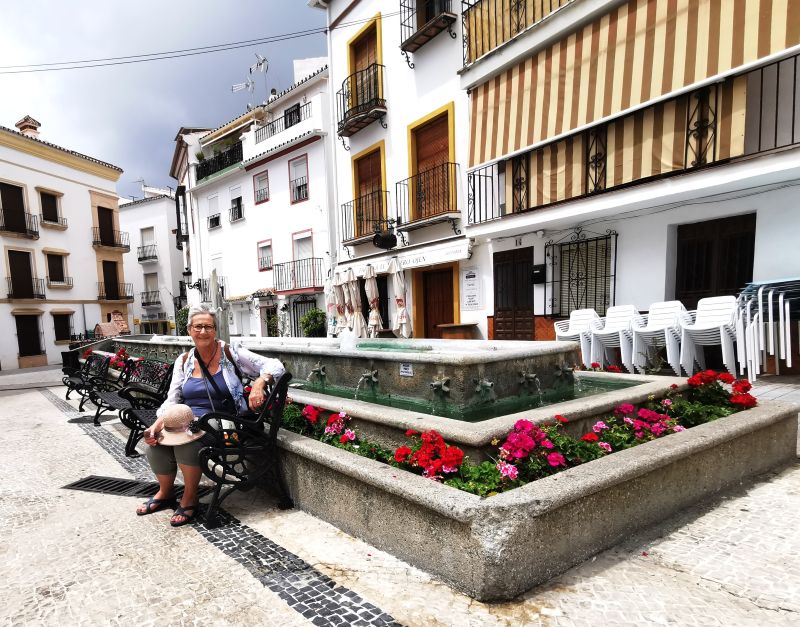
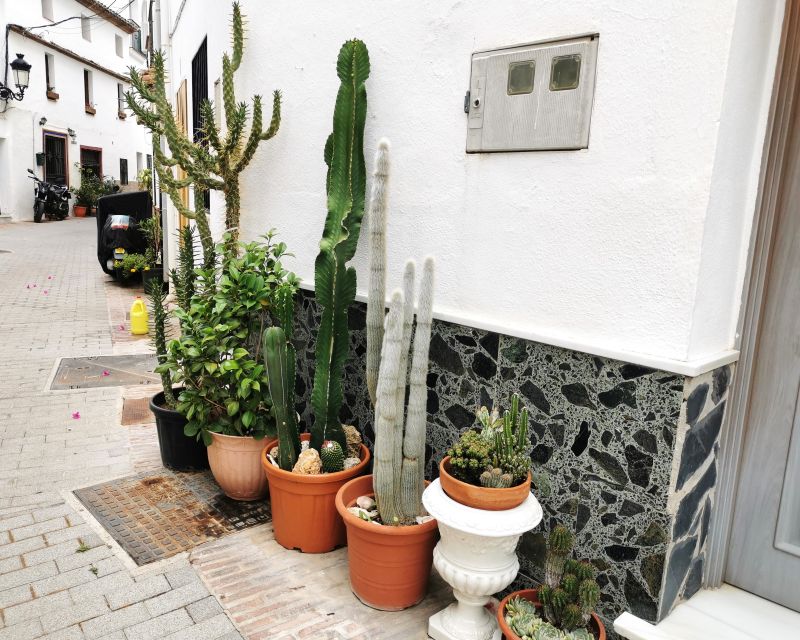
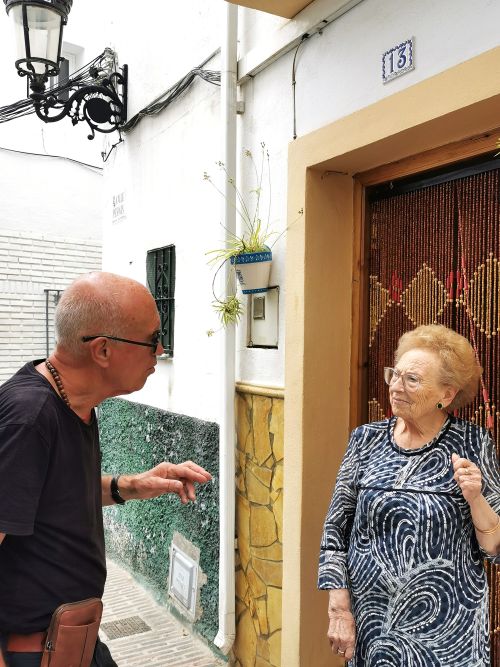
The streets are very steep and we puzzled as to how visitors and locals get their belongings or suitcases up to their homes or the many Casa Rural (houses for rent) dwellings. The answer to our question soon materialised outside the ‘La Posada del Àngel’ hotel in the form of a golf cart!
There was a lot of construction and renovation happening in the town, and little 4-wheel carts were whizzing up and down the streets, removing rubbish from building sites and bringing supplies for the refurbishing.
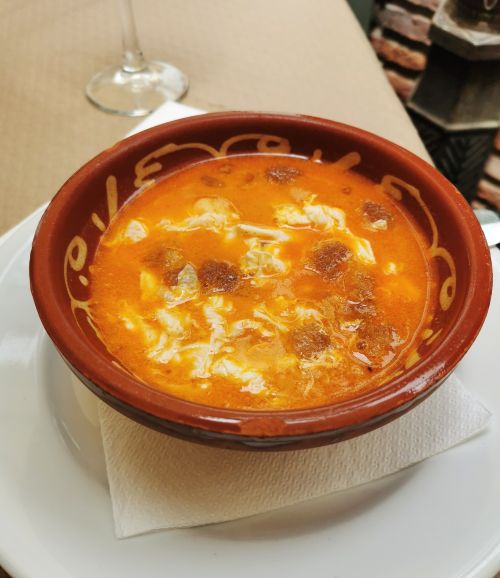
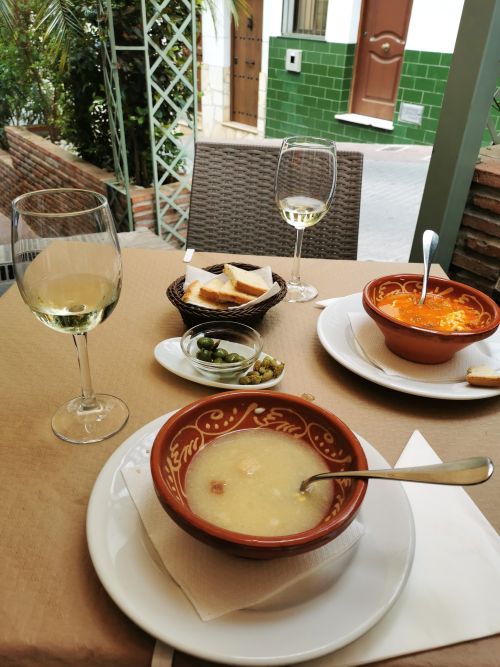
It was a beehive of activity as we ate our soup in the front garden of a restaurant—El Tunel, before walking down to the square that housed the fountain and the church ‘The Iglesia de Ntra, Sra de la Encarnación’ (Church of Our Lady of the Incarnation).
Remember to open up the groups of photos to see them fully!
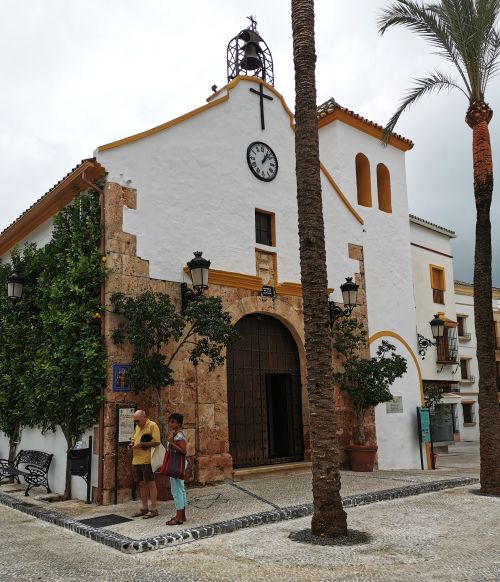
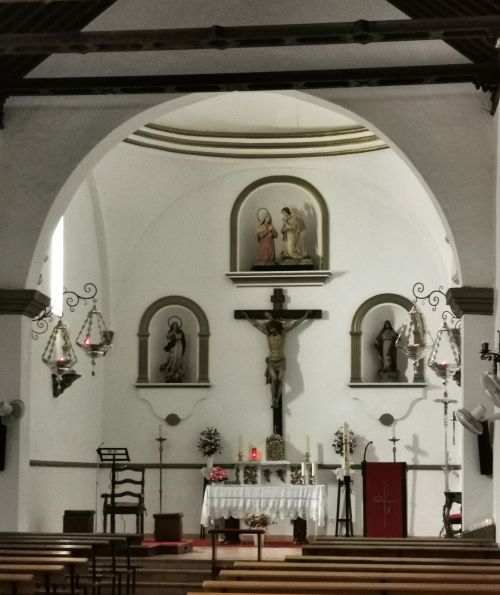
Carefully negotiating more steep streets in a brief shower of rain, we made our way back to the car and turned our attention to driving high up onto the hilltop above the village and on into the interior.
Rural Malaga on the way to Ronda
Happy to be underway with the second part of our journey, we passed through towns such as Monda and Alozaina, stopping at Yunquera for fresh orange juice on the way towards El Burgo and Ronda. Each of these towns and regions sits among the high hills of the Sierras, deep gorges, and low valleys.
Remember to open up the groups of photos to see them fully!

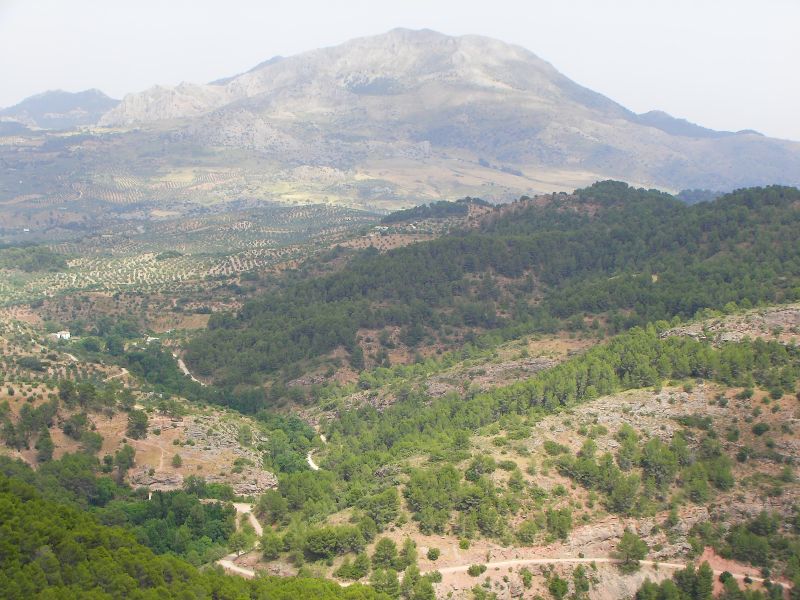
We marvelled at the scenery, stopping when we could to climb the rocks and capture the wide vistas, while chatting to other travellers.
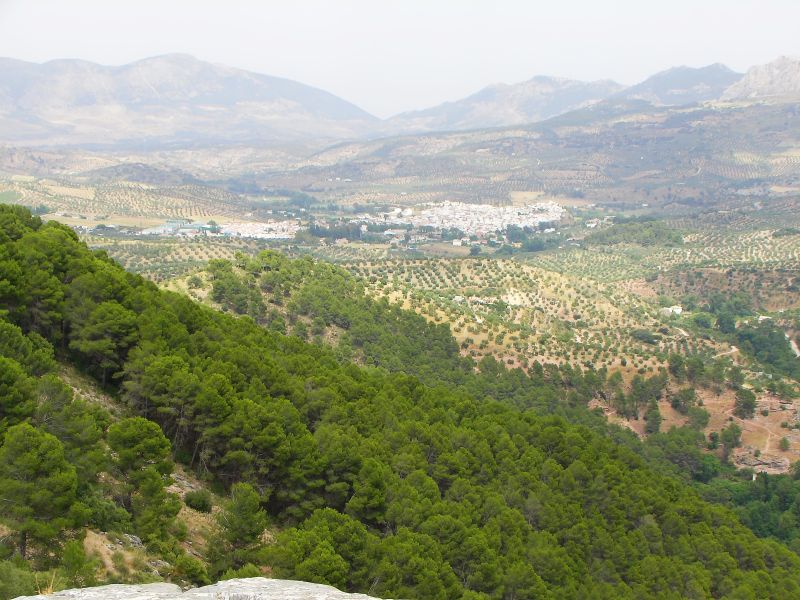
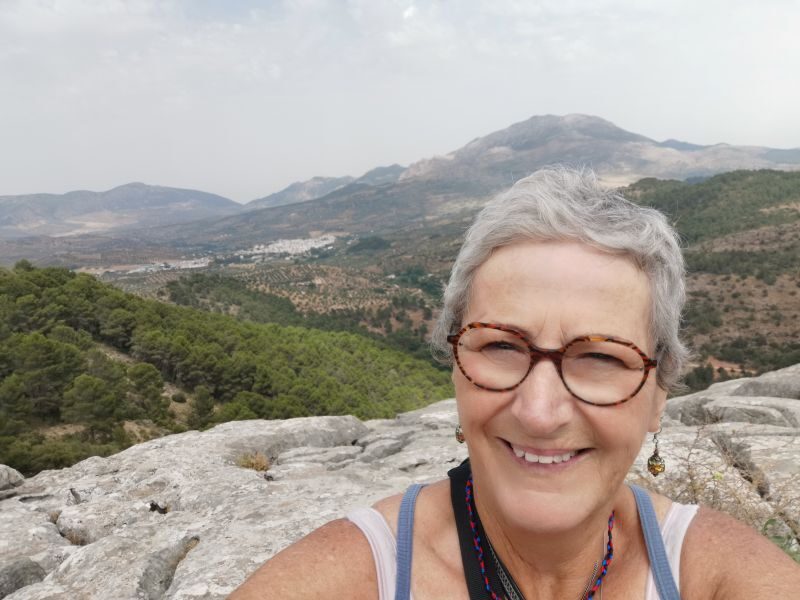
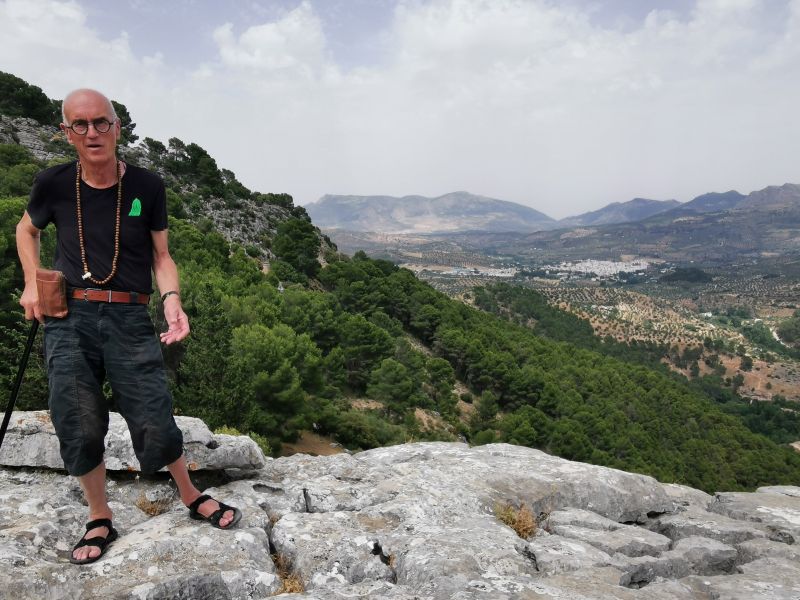

Enjoying Rural Malaga, the National Parks and El Burgo


Puerto del Viento
Unfortunately, the narrow winding roads, in places such as Puerto Del Viento (Port of the Wind) at 1061m (3481ft), meant we were unable to always stop and capture the exquisite scenery on camera. Check the following link for photos of the area mentioned.
https://www.quaeldich.de/paesse/puerto-del-viento
Cortijo Las Piletas & Ronda
We drove on towards Ronda, bypassing the city to get to our accommodation 12km further along on the Ronda-Seville road within the boundaries of the Grazalema National Park. Cortijo Las Piletas is an amazing rural hotel and from the minute we pulled into the sloping driveway to cooling off in the expansive swimming pool, we were impressed.
Remember to open up the groups of photos to see them fully!
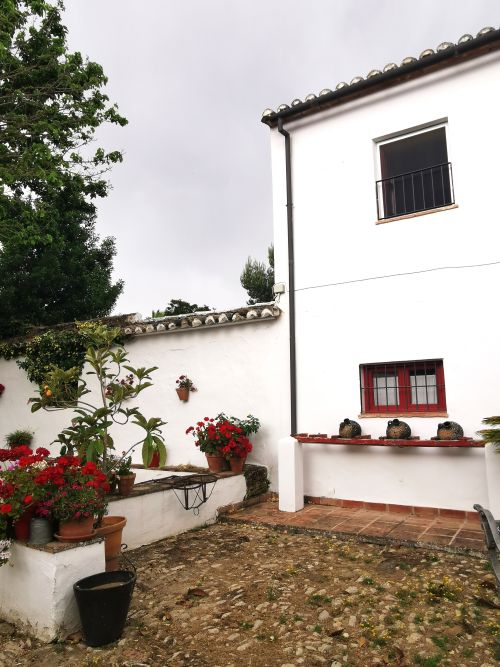
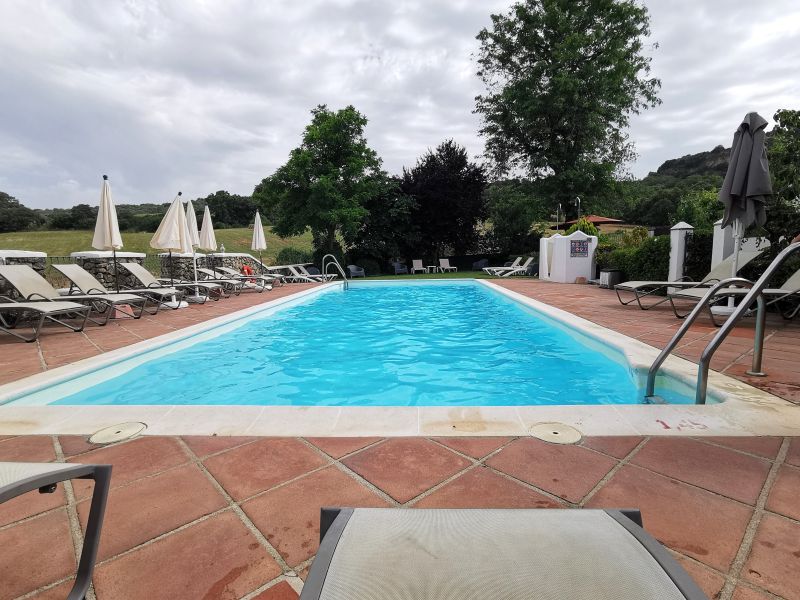


As we were met at the large ranch-style wooden table that was the reception desk and shown around the property to our room, we loved the feel, look, history, and rural setting of what would be our home for the next 3 nights. The Cortijo had been a former small farmhouse for several generations over more than 200 years. Originally comprising large stables, a home for animals, and grain stored upstairs, it has been transformed into a rustic hotel set in almost 7ha of farmland, typical Andalucian forest, and 1500m2 of gardens.
Remember to open up the groups of photos to see them fully!
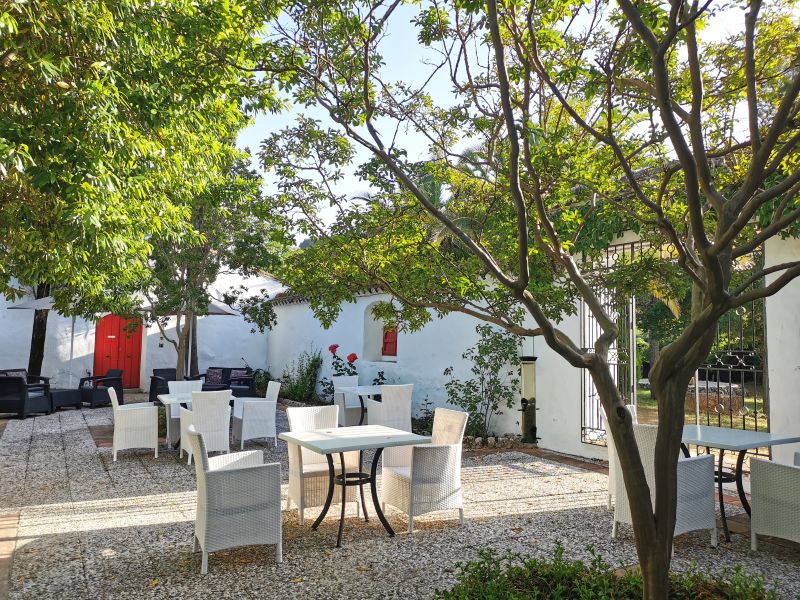
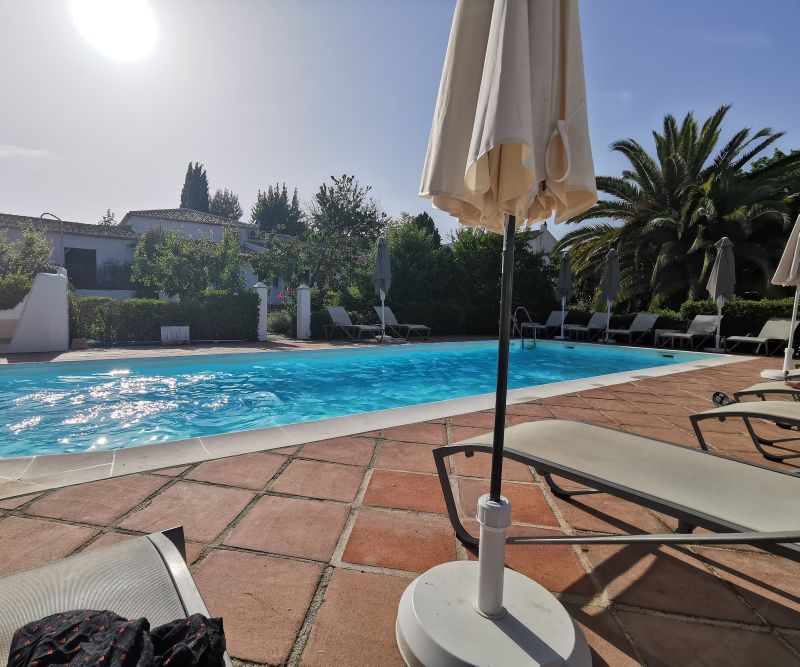

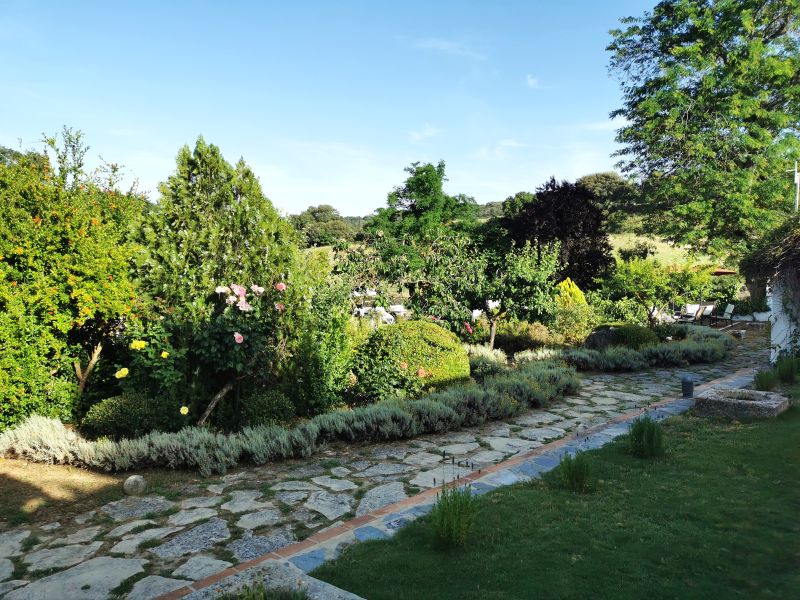
The gardens are filled with roses and regional plants that reveal their beauty and fragrance at various times of the day. Guests can make use of many lovely spots to relax around the gardens and buildings during their stay. When the farm was being converted into a hotel, the owners uncovered bricks and other construction materials dating from the Roman era of the 1st and 2nd centuries AD. The farmhouse sits in a beautiful valley near Acinipo, now called Ronda la Vieja (Old Ronda), formerly the capital of the Roman civilisation in the area. We planned to visit the Roman ruins at Acinipo but the road was closed and we missed visiting this heritage site. We enjoyed relaxing in the gardens, by the pool, or sitting in the outdoor dining area for breakfast or the evening meal, delighting in the country sights and sounds that created an atmosphere of bliss all around.
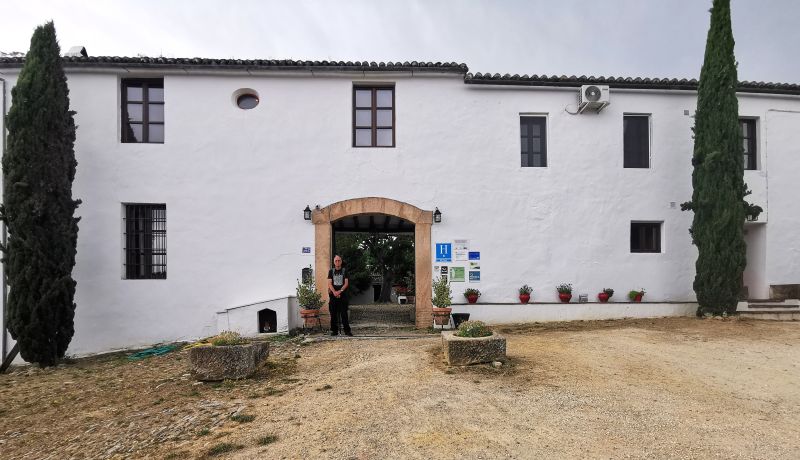

Exploring Ronda
We had 2 days exploring this area. The first day we visited the iconic hilltop city of Ronda. We had been here in 2008 and were keen to see if we remembered much other than the famous bridge, Puente Nuevo (new bridge), over the 394ft (120m) El Tajo gorge of the Guadalevin River, creating an extraordinary geographical location for this beautiful city.
Ronda IS uniquely beautiful, and as one of the popular ‘Pueblos Blancos’, it is the largest of the ‘white towns’ in Andalucia. The atmosphere is appealing with no skyscrapers and large glass buildings. Instead, residences and ancient buildings line the cliffs, and narrow streets lead to little nooks and crannies where historically poets, writers, and artists enjoyed the enchantment of the traditional whitewashed houses where inhabitants proudly grow their colourful flowers abundantly on their balconies.
After parking our car, we walked to the Alameda del Tajo (a large park with a viewing deck), which offers amazing views across the rolling hills to the mountains far away and along the cliffs towards the bridge.
Remember to open up the groups of photos to see them fully!

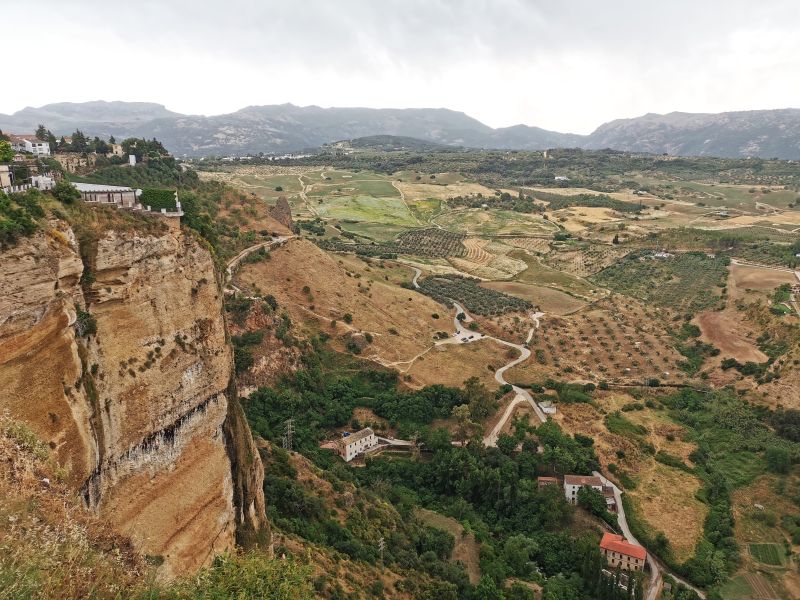
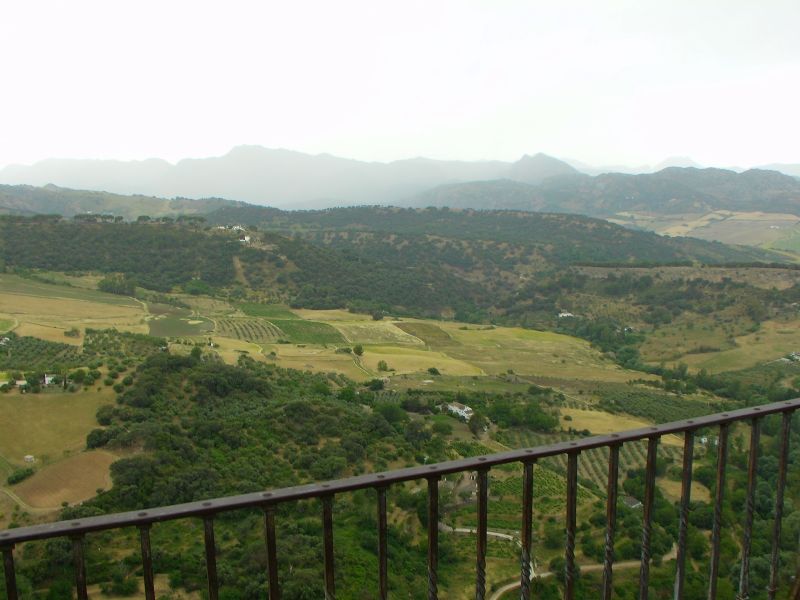
Manfred and the view from Alameda del Tajo, Ronda
It was very windy on the cliff edge and so we retured to the main street that led to Plaza España and nearby a row of shops selling souviners and ice cream. The one that took our eye was a nougat shop, Torrons Vicens, temperature controlled and stocked with the most amazing array of nougat with nuts, plain, flavoured, and coloured, and wrapped for immdiate purchase. We bought one and on leaving the shop, Manfred thought we would be back!
What is Torrons Vicens?
A handcrafted selection of nougat and speciality sweets and chocolates, using top quality ingredients, following original recipes from the master nougat makers of Agramun since 1775!
https://www.vicens.com/en/en-torrons-vicens
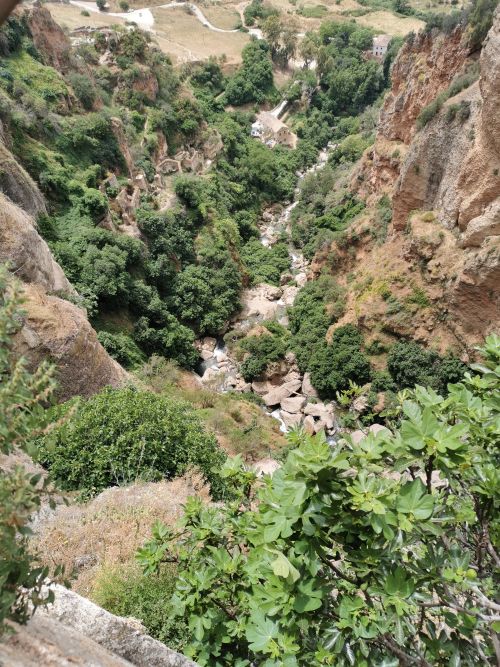
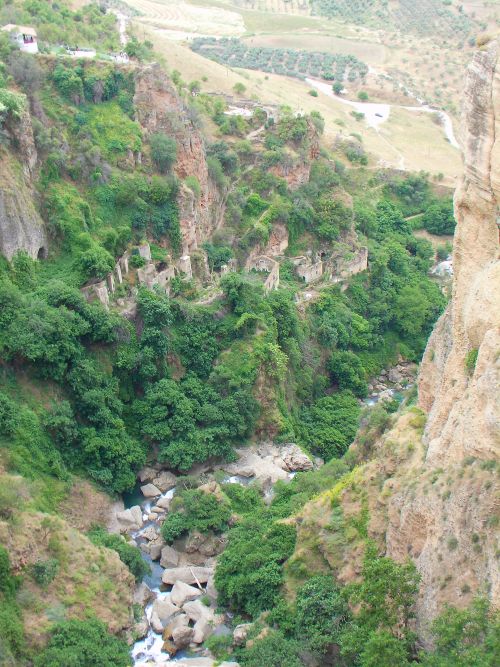
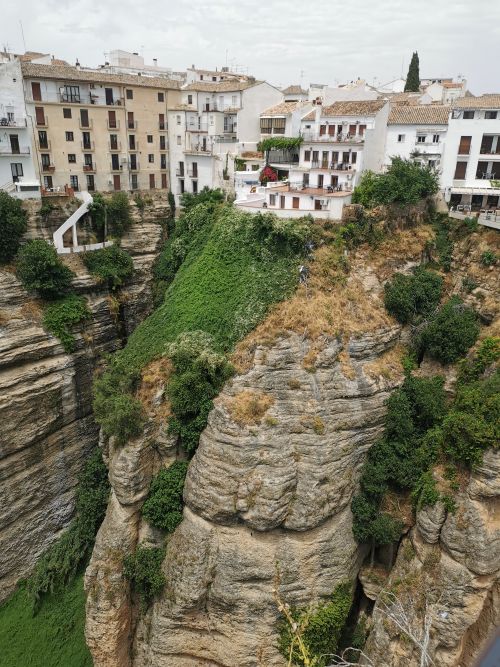
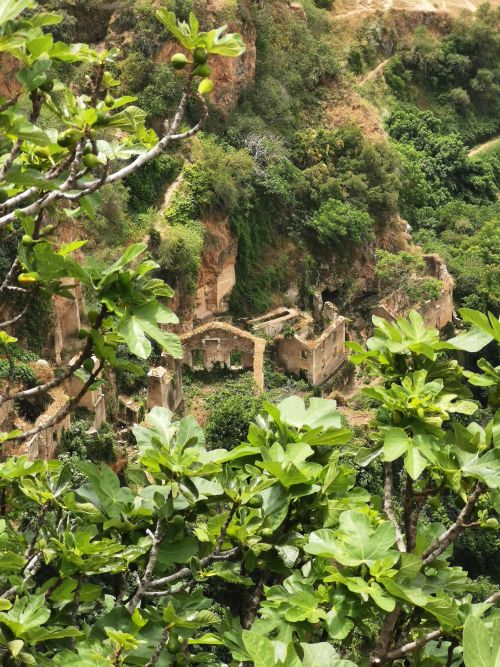
We crossed the Puente Nuevo bridge, enjoying a brief look around before finding the tapas bar where we wanted to enjoy lunch in and settled down for some good food and wine. ‘Tabanco Los Arco’s sits right beside the bridge under the veranda of an old mansion, renovated with shops and views across the gorge. It is charming, rustic, and cosy, with customers leaving as satisfied as we were. Tables were reserved, and we were lucky to get a high-seat bar table where we could watch the comings and goings of the staff preparing food and drinks. An experience we had in other tapas bars and relish even now.
Remember to open up the groups of photos to see them fully!

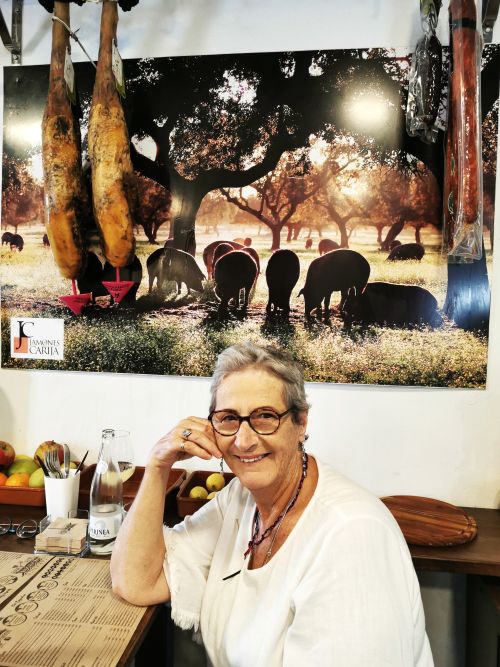
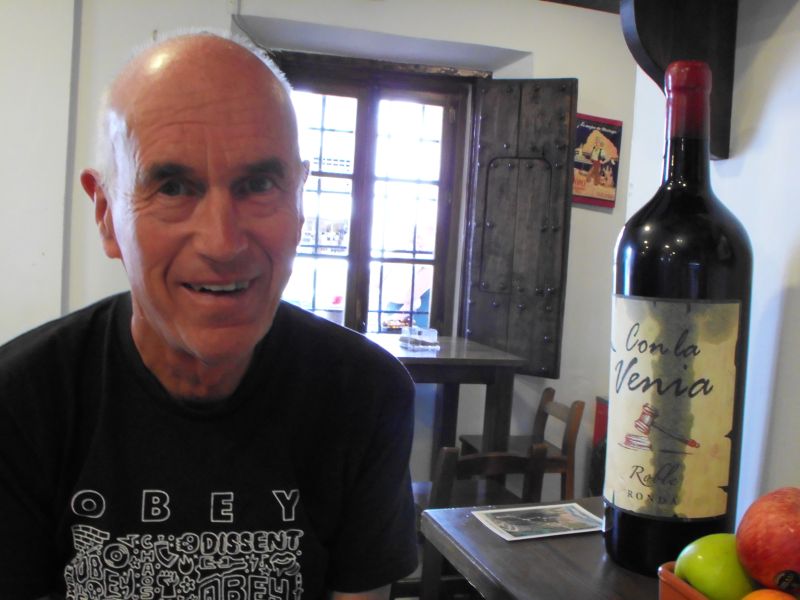
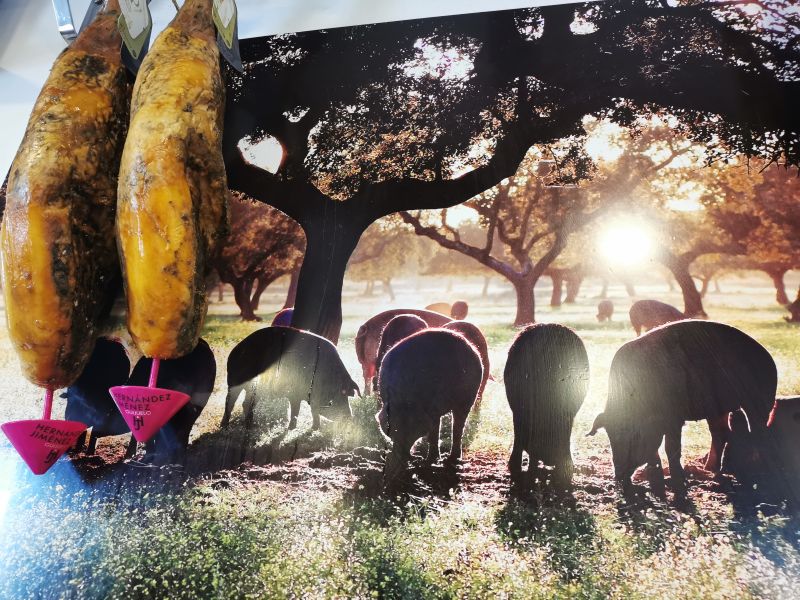
Tabanco los Arcos
https://wanderlog.com/place/details/1446388/tabanco-los-arcos
Plaza Maria Auxiliadora, Ronda
From the Tabanco los Arcos on the edge of the Puente Nuevo, we walked to the Plaza Maria Auxiliadora, where you can find fine restaurants and accommodation or descend to the floor of the gorge and visit the Arab baths.
The return walk takes about 2 hours. It was a hot day, and we sat in the shade watching people arrive back at the Plaza exhausted, hot and thirsty from the climb up the long, steep walkway. An ice-cream seller was making a lot of sales that day!
Remember to open up the groups of photos to see them fully!
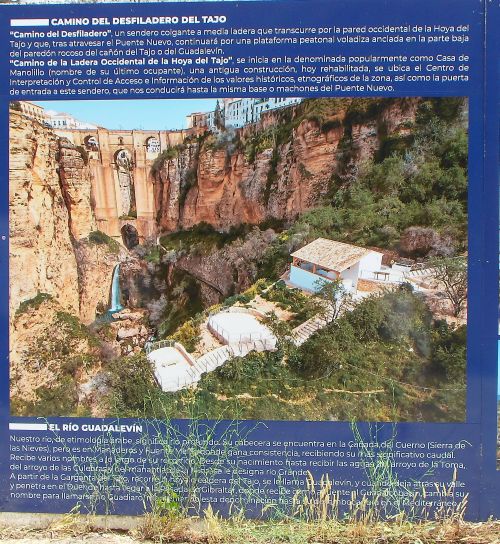
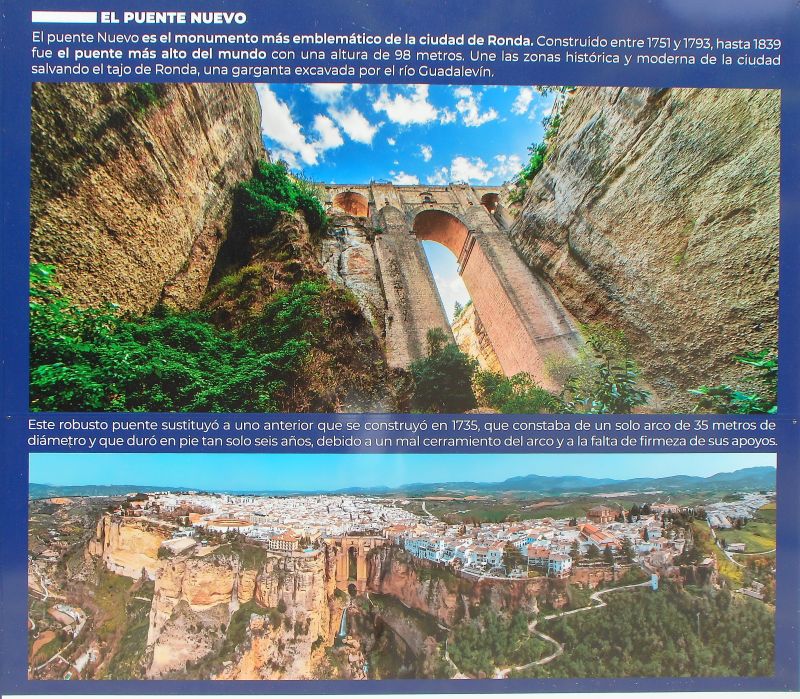

Signboards in Plaza Maria Auxiliadora
We meandered back to the 18th-century Puente Nuevo bridge. Proposed in 1542, construction began around 1734 but was not completed to its current form until 1793. It was built to serve the growing market districts of Ronda, and reading the history of its construction is very interesting. The current bridge is the second one built on the site, following the collapse of the original and the death of 50 citizens in 1741. The rebuilding story has its own interesting tales, and Ernest Hemingway may have embellished the fables of prisoners being thrown off the bridge during the Spanish Civil War. However, in the top arches there is a centre room which today contains the ‘interpretation museum’ of the bridge. Formally, it was used as a prison for bandits and dangerous criminals during the 19th century and political prisoners during the Spanish Civil War.
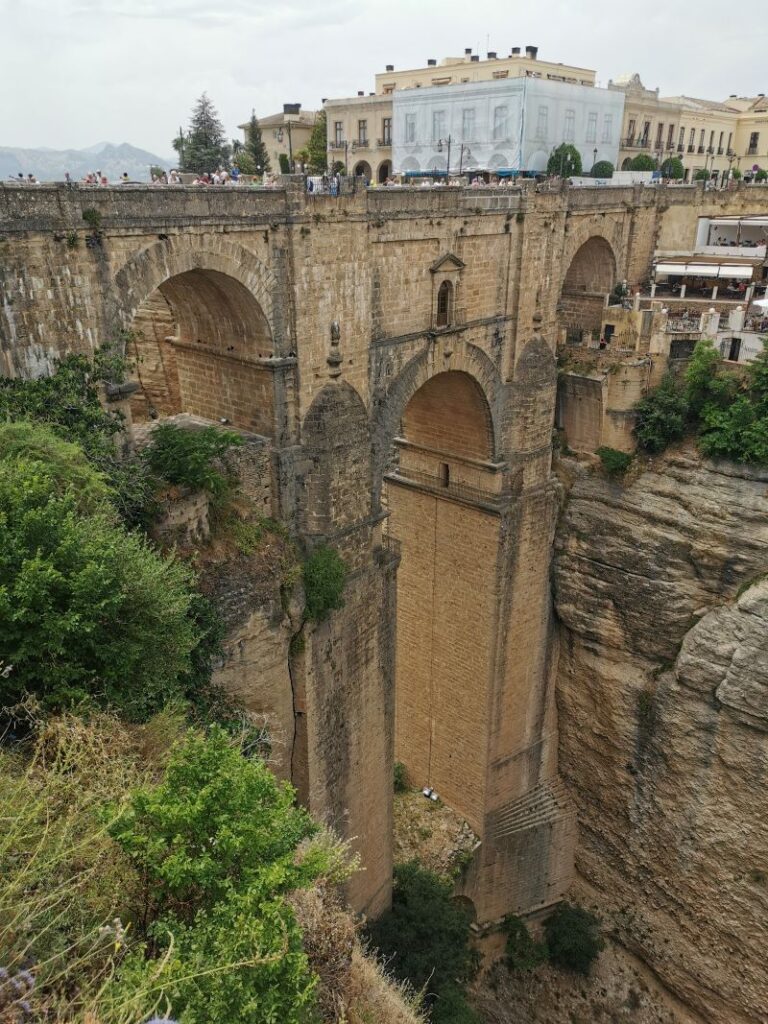
Old Ronda
As we walked, we passed many old iconic mansion buildings with characterful doorways, Juliet balconies, and window boxes of coloured flowers and narrow cobbled streets. Some of these mansions are now museums, shops, private residences, or small hotels.
Back to the Puente Nuevo Bridge and the Mirador de Aldehuela
Views from Mirador de Aldehuela
At the bridge, we paused enjoying the view from all quarters before wandering down to the Mirador de Aldehuela beside the bridge. From here, more, and equally dramatic, views are to be seen, including down the narrow, deep gorge to the Puente Viejo, the 16th-century ‘old bridge’ which is now only open to walking traffic.
Remember to open up the groups of photos to see them fully!
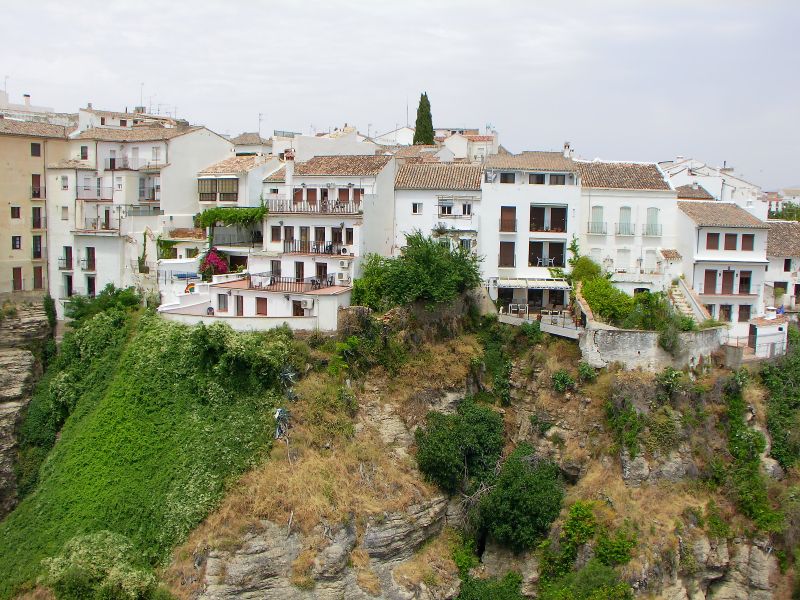
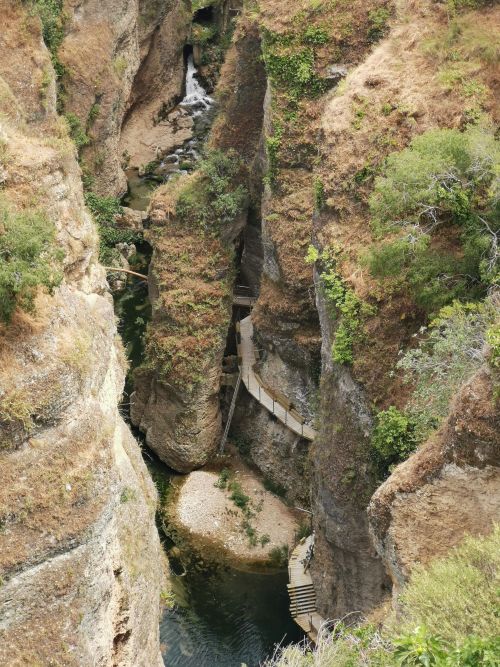
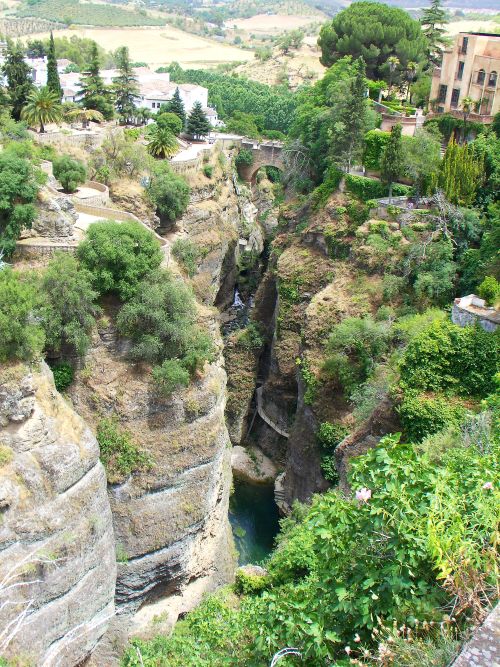
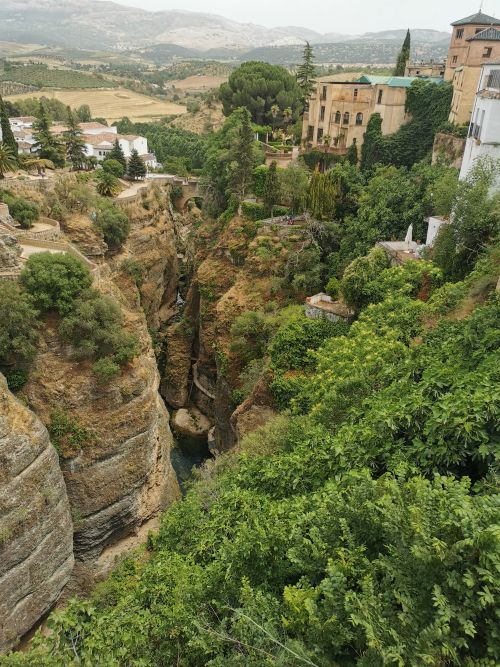
It is built on the remnants of a former Muslim bridge, which was washed away in a flood. Close by and to complete the trio of bridges that span the El Tajo, the recently restored Puente Romano (Roman Bridge), also known as the Puente Àrabe (Arab Bridge), was built in the 14th century and was the original main entrance to Ronda. The El Tajo gorge is 68m (223ft) at its widest, and the dramatic cliffscapes are a photographer’s dream.
Walking the narrow cobbled streets, you get a feel for the heart of Ronda, which is located at 780m (2,600ft) above sea level, about 2 hours inland from the coast and set among spectacular hills between the Parque Nacional Sierra de las Nieves and the Parque Natural Sierra de Grazalema. On the cliffs, you can wander in the parks that offer rich vistas. On one side of the gorge is the Moorish old town, La Ciudad; and on the other side is the new city of El Mercadillo, which came into being in the 15th century.
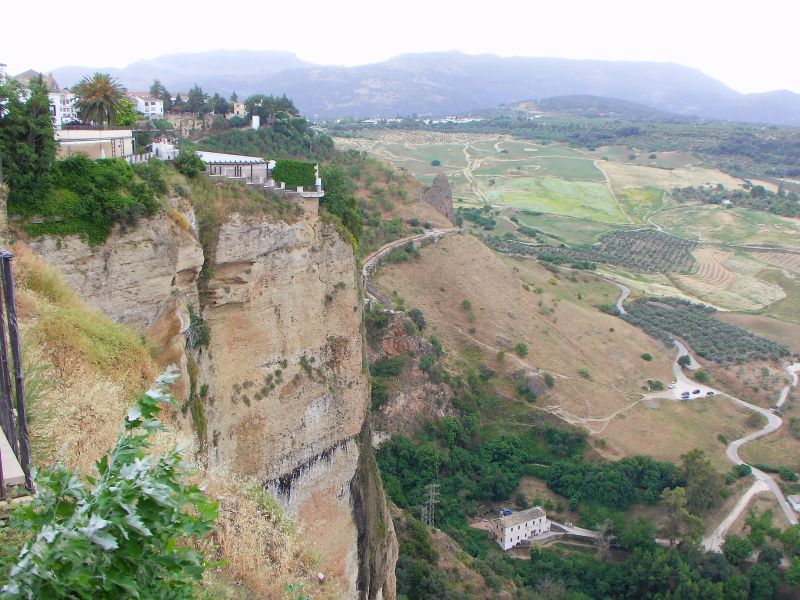
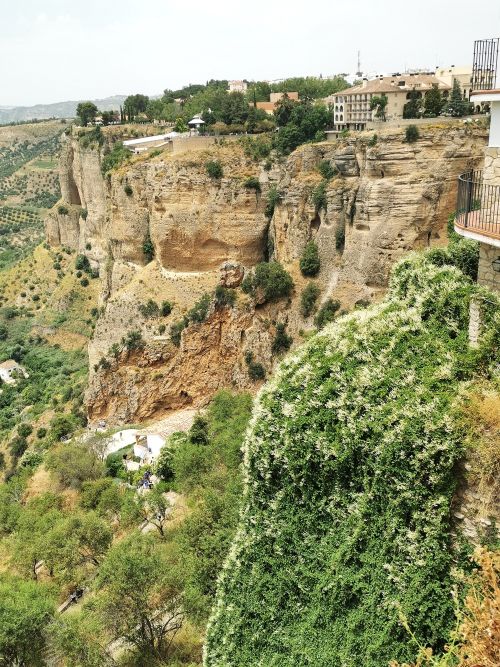
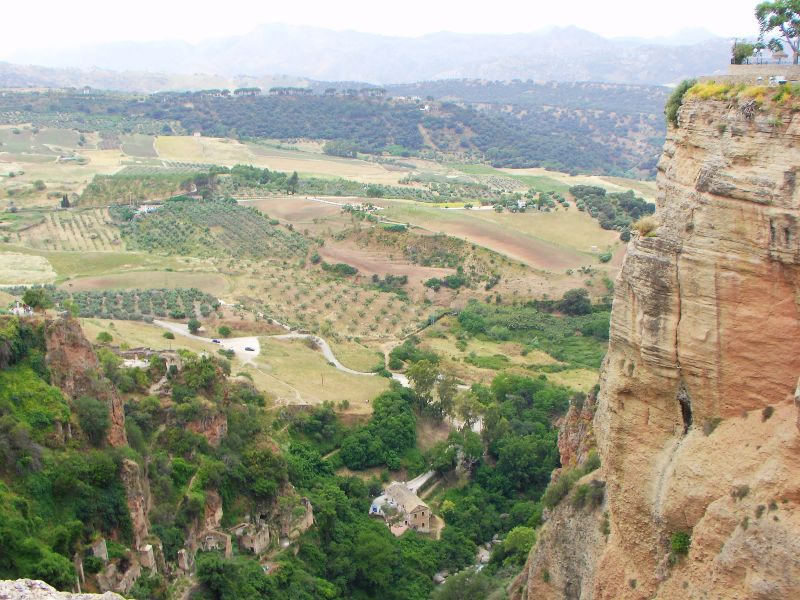
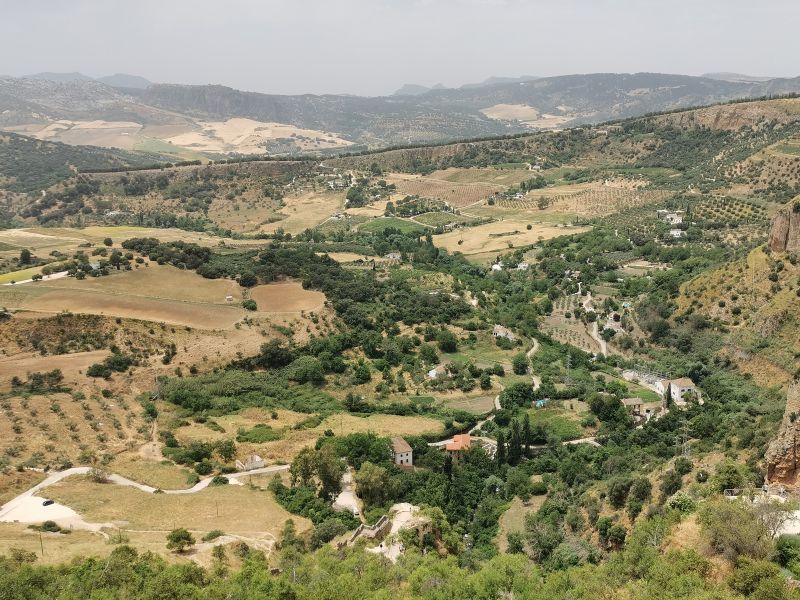
Some Interesting History of Ronda
Being one of the oldest cities in Spain, like many others, it has a turbulent story to tell. Although there is evidence of prehistoric settlements of the Neolithic period, as seen in cave paintings in the ‘Cueva de la Pileta’, Ronda was first populated by the Celts around the 6th century and was called Arunda. The ‘Celtiberians’ did not invade Spain (The Iberian Peninsula) but migrated by sea and through the Pyrenees in two migratory waves between 1000BC and 300BC, settling mostly in the upper third of the Iberian Peninsula (Spain and Portugal).
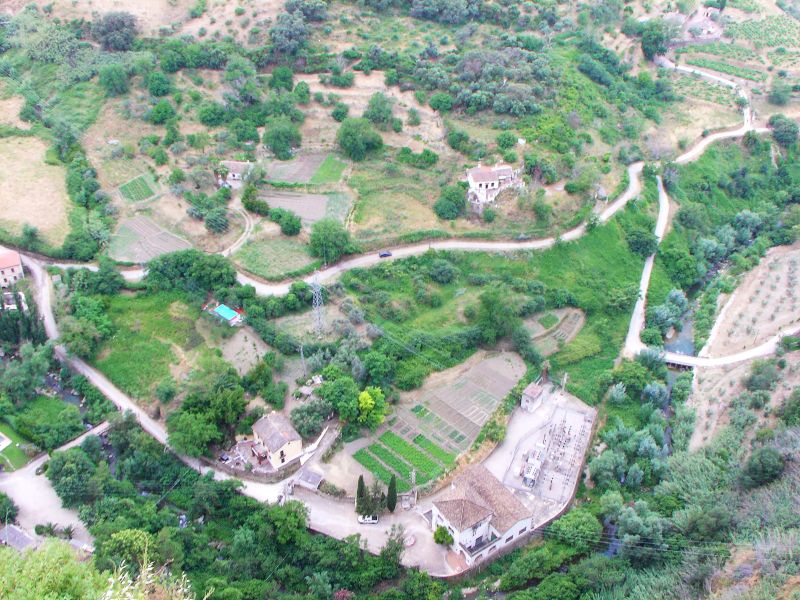
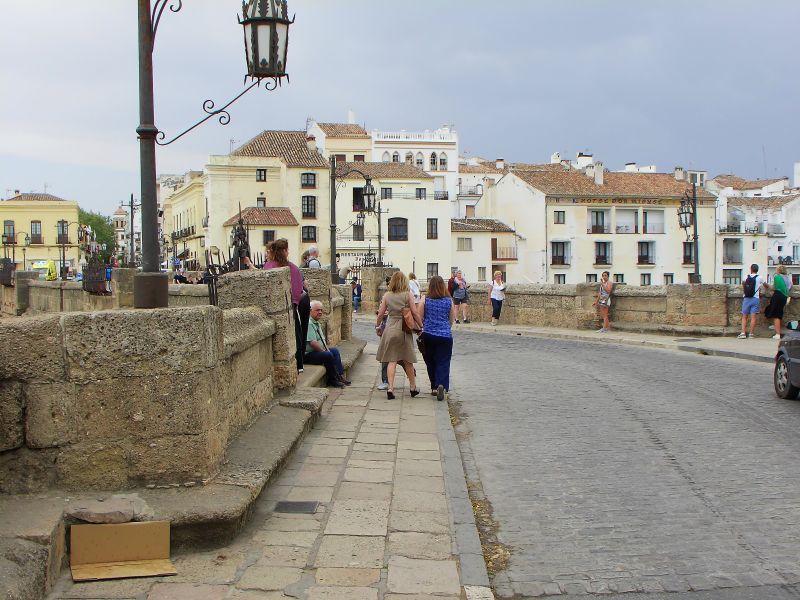
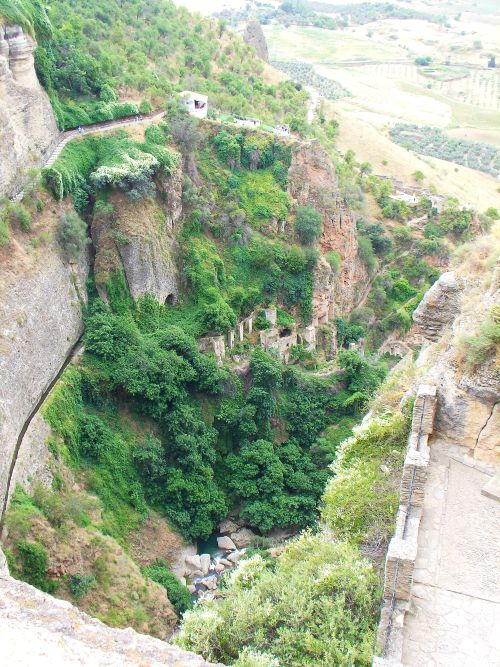
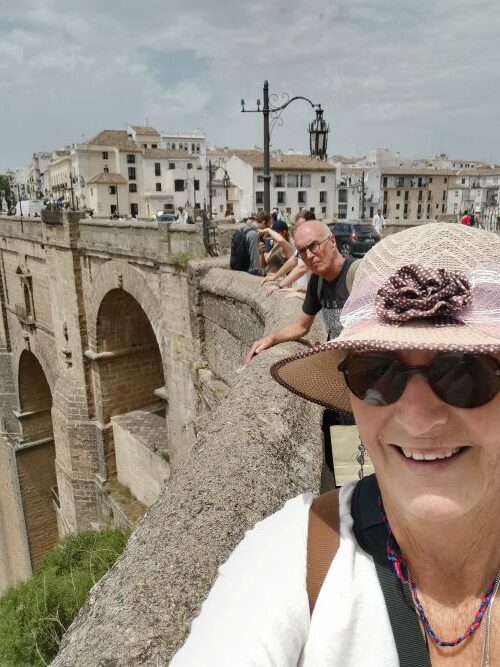
Ronda, being on the main trade route from the coast, has provided archaeologists with a plethora of items, such as pottery and stone age relics, which suggests there has been occupation around the site of the city since 1,100 BC. Palaeolithic, Neolithic, Iberians, Greeks, Phoenicians, Carthaginians, Romans, and Visigoths have all lived in this region. Muslim rule began around 711AD and lasted until the Christian rulers took over around 1490AD. Bloody battles and religious reforms took place, and monuments stand today that showcase a good amount of this history in the form of Roman ruins, churches, palaces, and statues of the various cultures and periods of history from this bygone era. After the Napoleonic occupation, it is said the ‘romantic travellers’ came and left their mark. Ronda has a lovely warm climate, but the region does get snow, and the surrounding hills have many hiking trails and abundant bird life. The region is also well known for the famous Pinsapar forests (Spanish Fir). In the past, we have walked among those trees, purchased soap made from them, and enjoyed the natural beauty of this stunning region.
Nougat & The Church of Our Lady of Mercy -St Teresa of Avila
As we wandered back through the Plaza España and on towards the carpark, we could not help but visit the Nougat shop again…!
Much chatting and more purchases were made before we visited the Baroque style ‘The Iglesia de Nuestra Señora de la Merced’ – Church of Our Lady of Mercy (St Teresa of Avila), a Carmelite Nunnary, and marvelled at the beauty of the Basilica’s interior along with the statue of the Saint and the Saint’s hand encased as a relic for all to see.
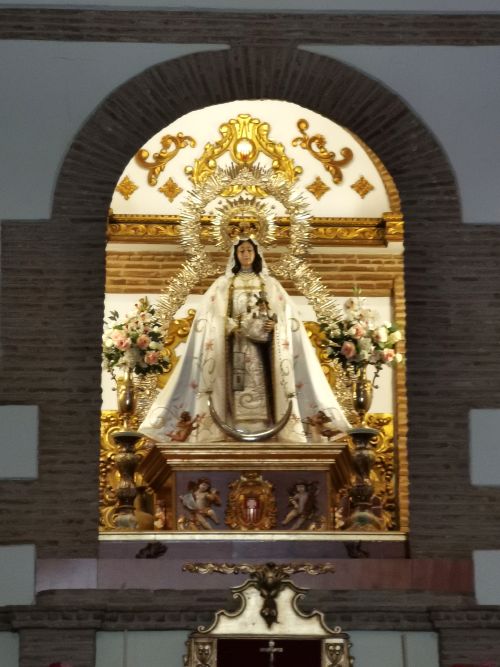
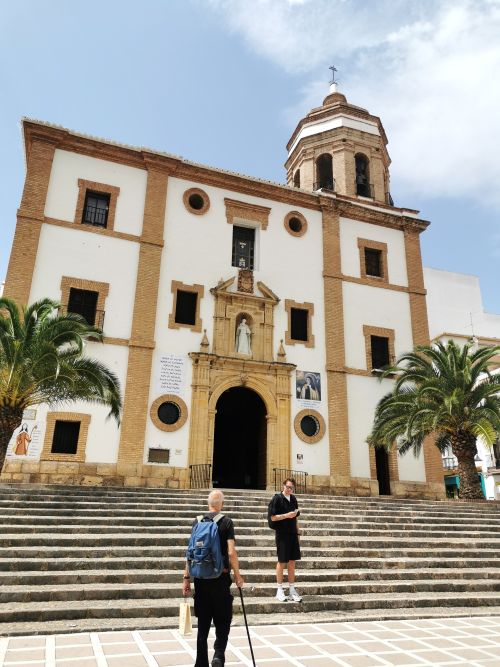
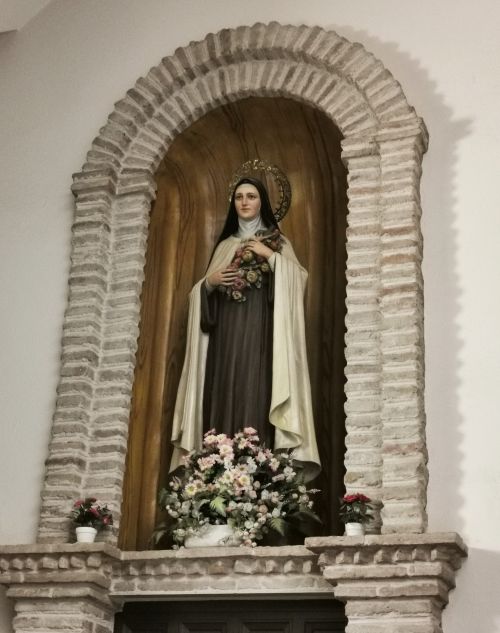
https://rondatoday.com/iglesia-de-nuestra-senora-de-la-merced-ronda/ states:
‘La Merced is more correctly a “Basilica” since it is home to a holy relic. The “incorruptible hand of Saint Teresa of Avila” and the story behind this is in itself worth telling, even if you never visit the church’.
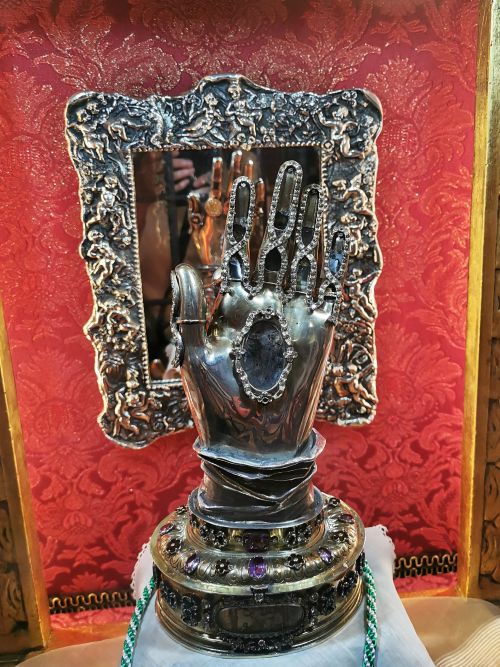
We happily returned to our accommodation and the cool water of the swimming pool at Las Piletas.
https://www.cortijolaspiletas.com/en/home
Setenil de las Bodegas
The following morning, after a delicious breakfast, we set off for the 30 minute 25km drive from Las Piletas to Setenil de las Bodegas, a charming town in the neighboring province of Cadiz. The two has an amazing history including an Arab castle fortress recaptured in 1484 after 15 days of battle by the Christians during the Reconquista and ancient white washed houses built into the surrounding cliffs as cave dwellings.
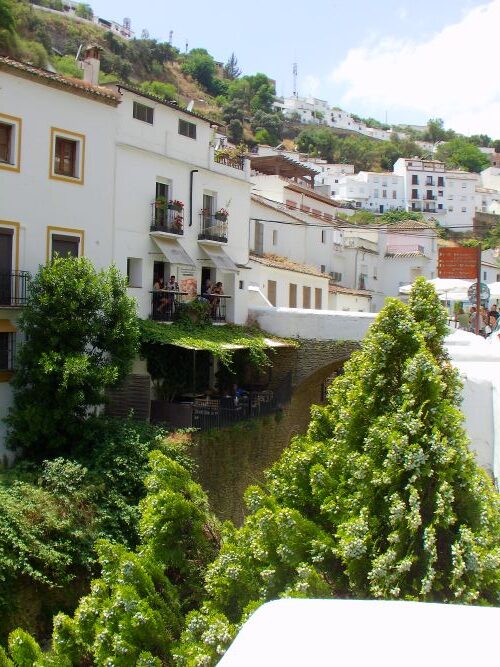
Wandering the ancient and cobbled streets of Setenil
On arriving in Setenil, we meandered from the car park up to the streets where cave houses have been transformed into bars, restaurants, and shops. The cobbled streets lie on either side of the Rio Trejo river within a narrow canyon, and the rocky overhangs still bear the black sooty scars of the fires of ancient times. The dwellings retreat into the cliffs of the rocky overhangs, and whitewashed walls with coloured doors forming the entrances to houses from a bygone era.
Remember to open up the groups of photos to see them fully!
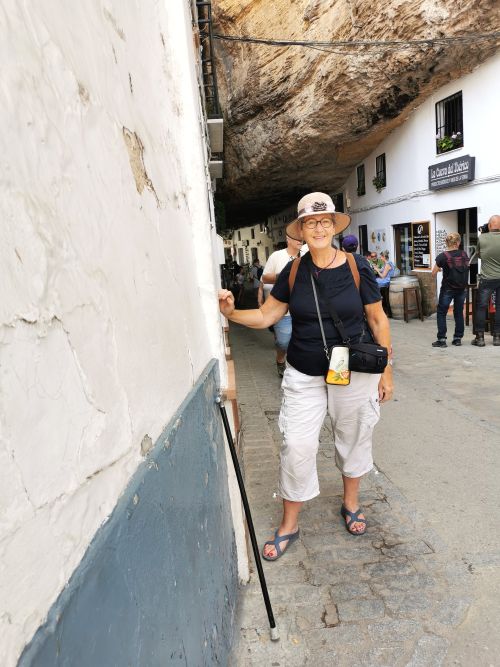
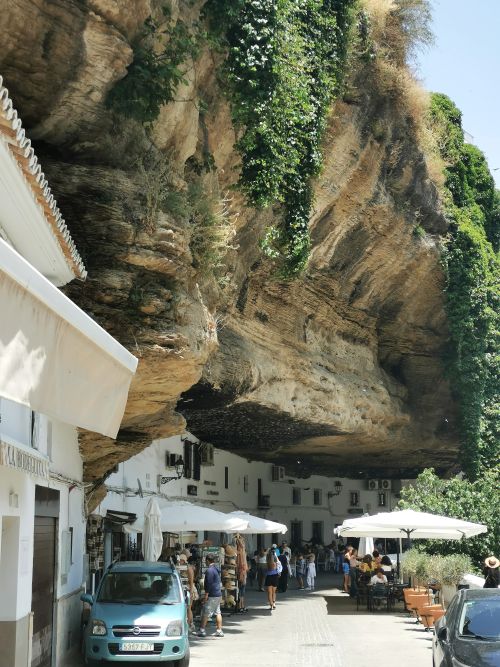
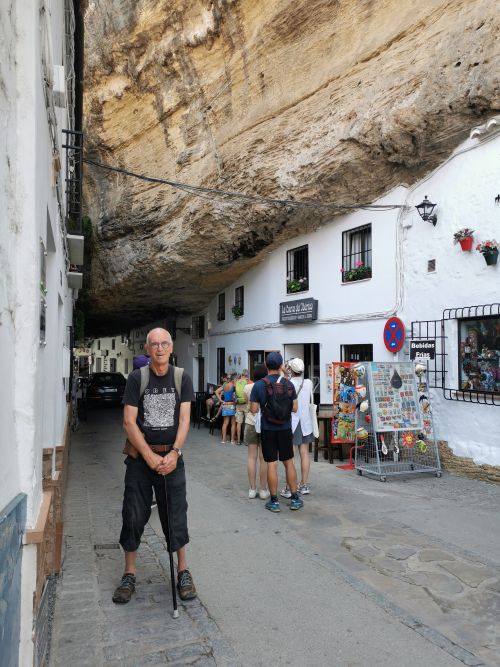

Further up the gorge, the dwellings are still occupied as homes to the many inhabitants (population 2024 approx 2,700) of this pretty white town. In places, the streets get very steep and the sloping cobbles have been replaced by steps built between the rows of townhouses. The streets are known as ‘Abrigos bajo las Rocas’, which translates as ‘shelters beneath the rocks’. It is a spectacular sight to see how these houses have been created within the cliff faces and formed into these ‘shelters beneath the rocks’.
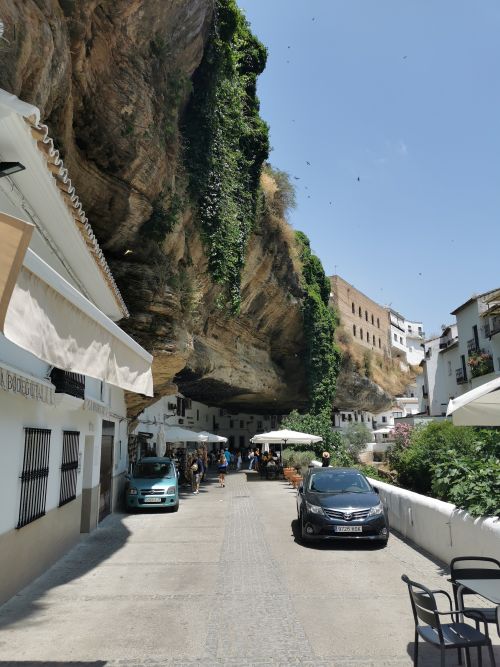
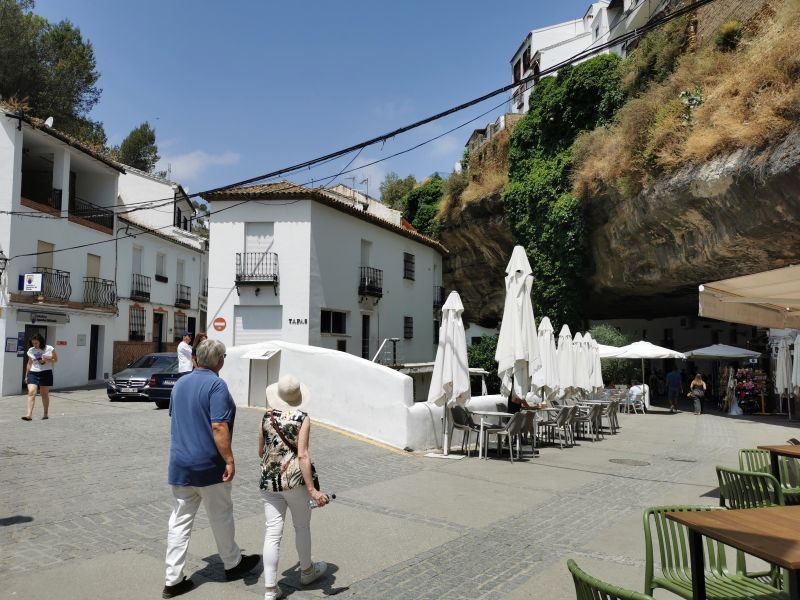
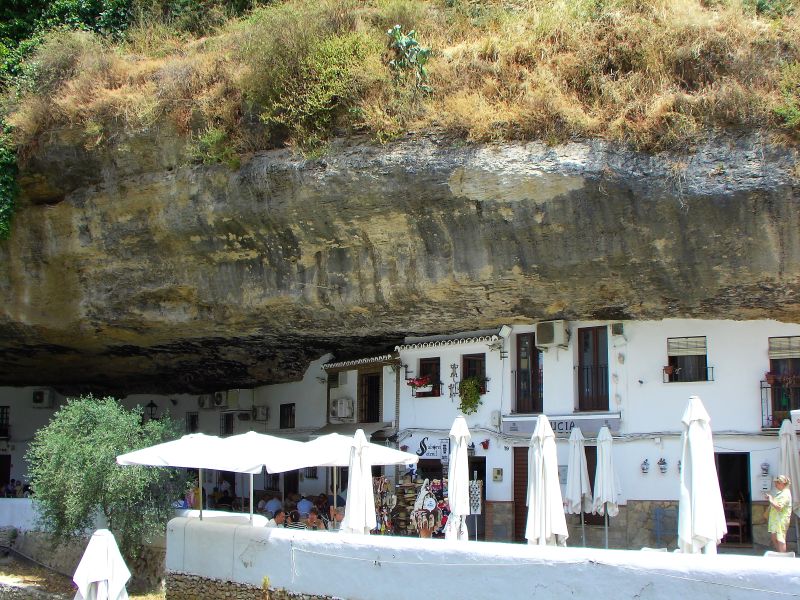

Some interesting history about this region
On our first visit here in 2008, we walked the steeper lanes up to the Torre del Homanaje (Tower of Homage/El Torreón), a Moorish castle dating back to the Islamic occupation around the 12th-14th century, used as a defensive position by the Christian troops. It now provides amazing views of the surrounding countryside. Nearby is the Iglesia de Nuestra Señora de la Encarnación, said to be a rare example of a Moorish and Gothic-style church. Constructed between the 15th and 17th centuries, it was built, as was common in Spain, on the site of an old mosque.
Historically, the area was occupied during the Roman period of the 1st century AD; however, information gathered from the nearby Cueva de la Pileta, discovered by a local farmer in the early 1900s, suggests that the area was populated in the Palaeolithic era up to 28,000 years ago. Finger made cave paintings in a variety of colours with various animal shapes feature on the caves’ voluminous walls, where humans lived. The caves also contain a burial site providing insights into life in the Palaeolithic age. In 1924 it was made a National Monument and visitors only get to see a portion of the cave’s large 500 metre interior galleries, considered the oldest in Spain. The excursions are conducted by torchlight by guides who are members of the family who still own the land within which it lies. No artificial light has been used in an effort to preserve the interior treasury of drawings and artifacts. The paintings have been dated to more than 20,000 years old, and in Setenil it is thought that continuous habitation has erased a lot of evidence of life in this town.
‘Taberna La Telera 1860’
Remember to open up the groups of photos to see them fully!


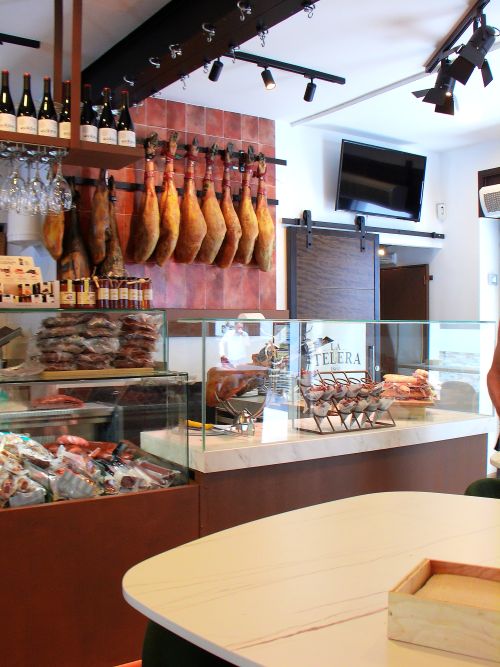

We did not revisit the cave, the castle, and Iglesia on this trip, instead taking time to enjoy the lower, less steep streets by the river where we partook of some very fine, typical Andalucian food and wine in the ‘Taberna La Telera 1860’.
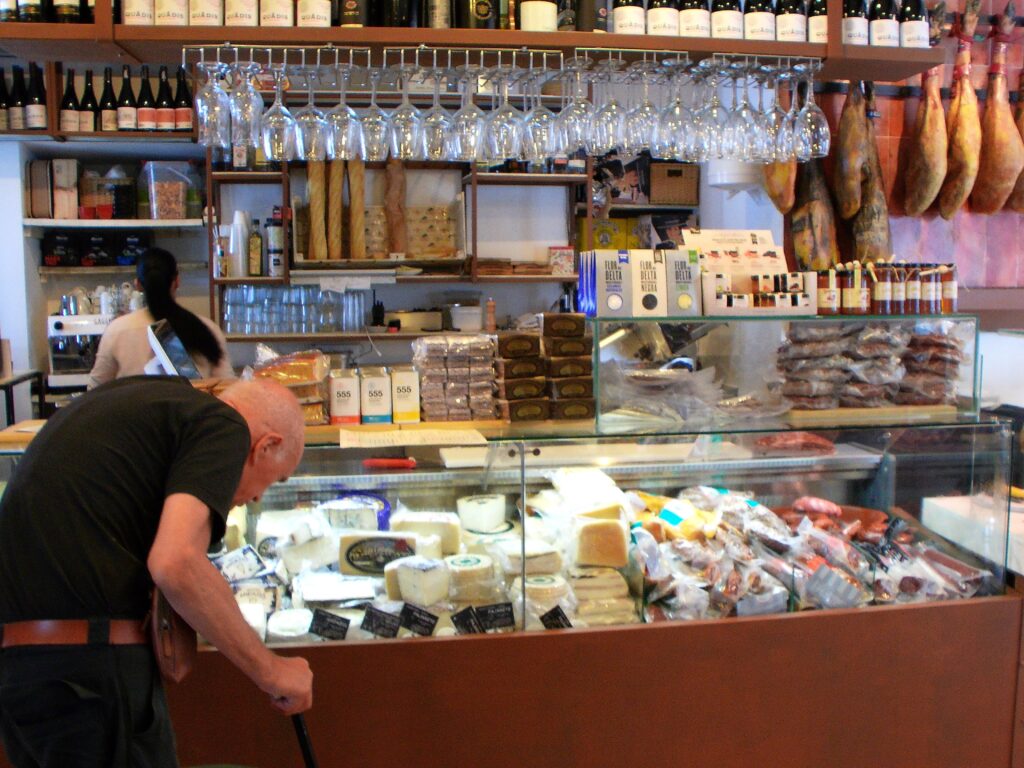
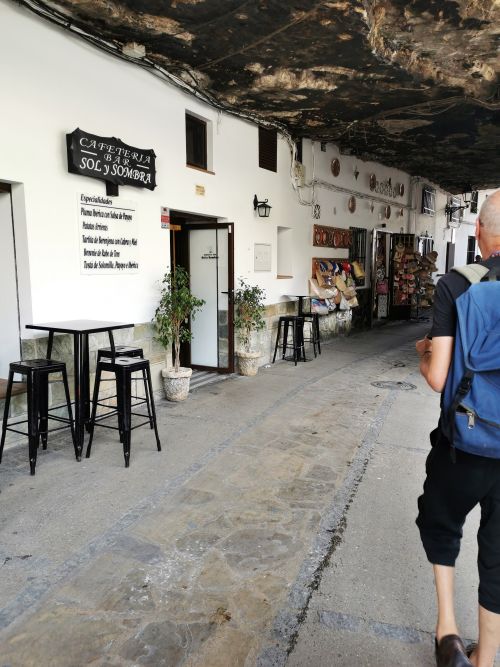

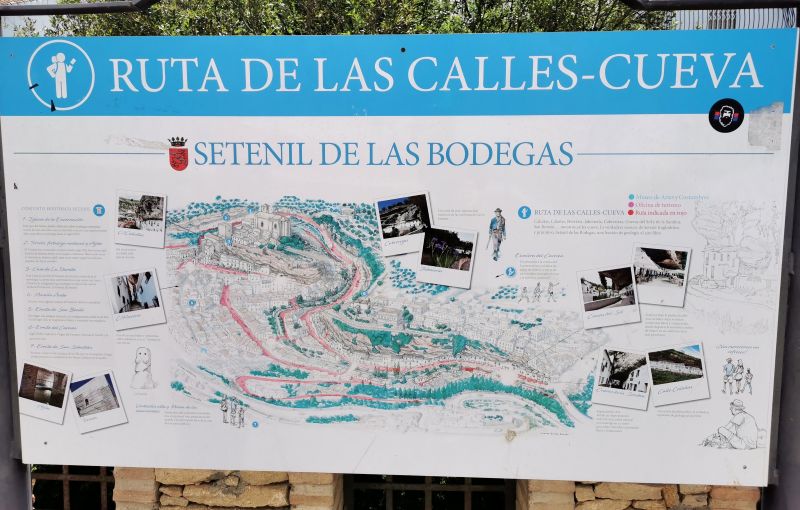
Beautiful views along the river: Rio Trejo & the river side of Taberna La Telera 1860
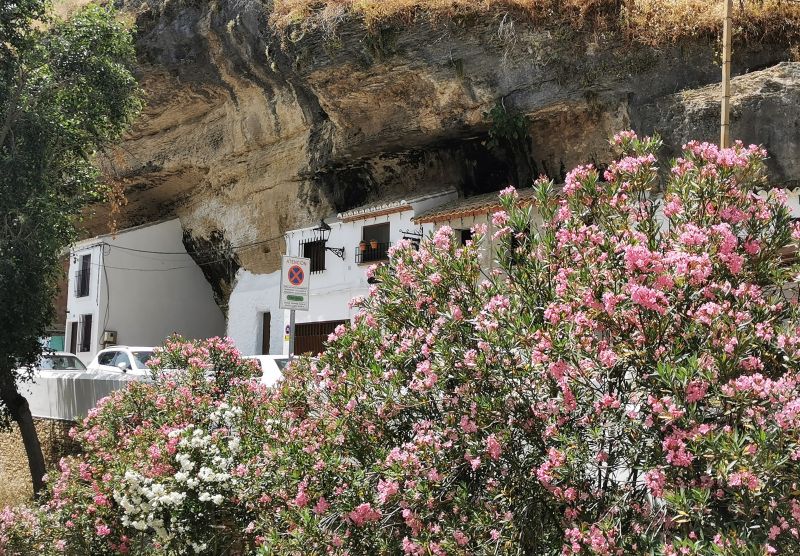

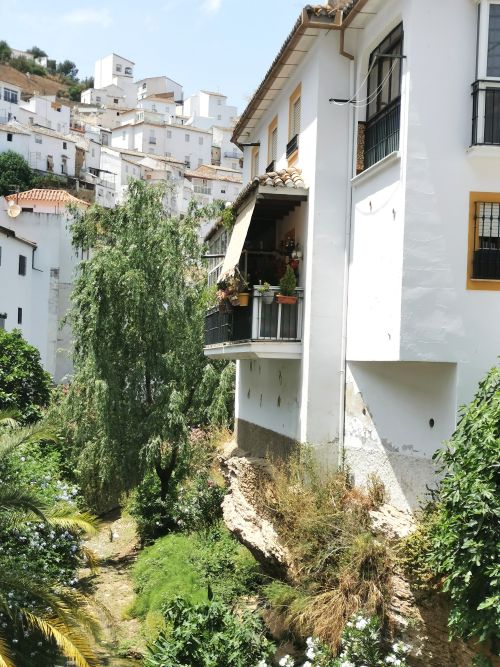

Heledería la Cueva & the delicious ice cream
Later, we crossed the bridge to indulge in some great ice cream at a converted cave house—’Heledería la Cueva’. We sat for some time enjoying the ambience and atmosphere at the tables beside the river, before walking back down the hill towards the car park taking in the sights of bars and restaurants and looking in the gift shops along the way.
https://www.rediscovering-emily.com/blog/guide-to-visiting-setenil-de-las-bodegas
Remember to open up the groups of photos to see them fully!
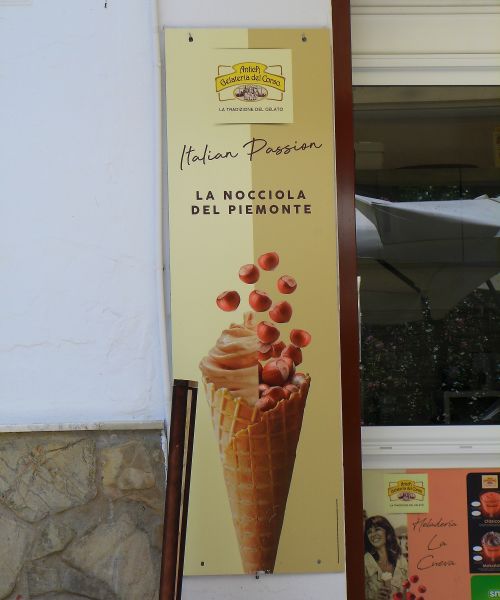

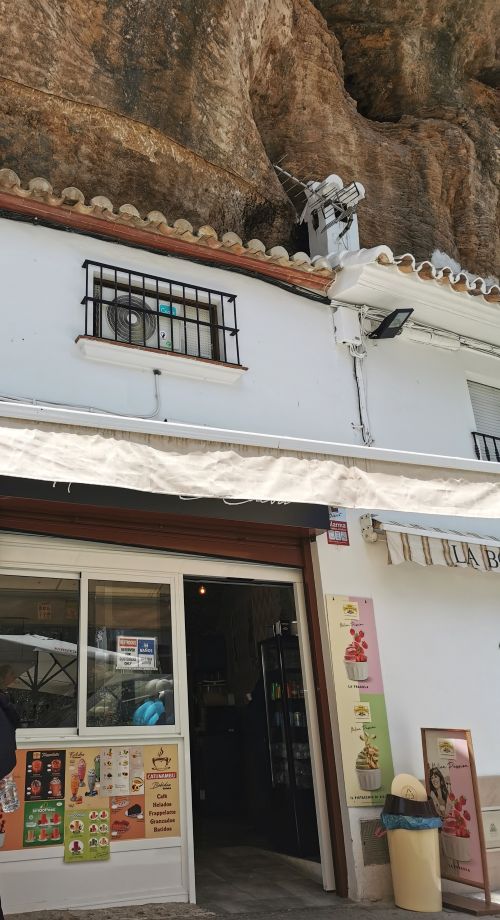
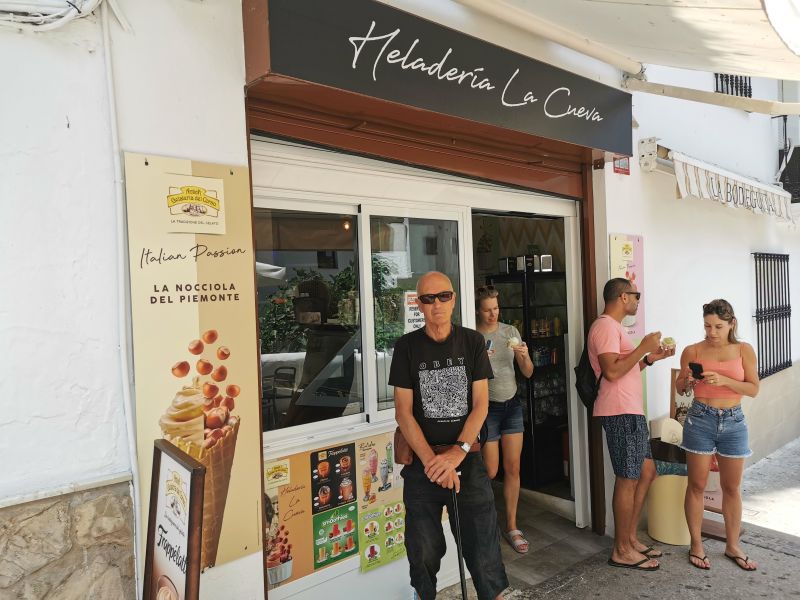
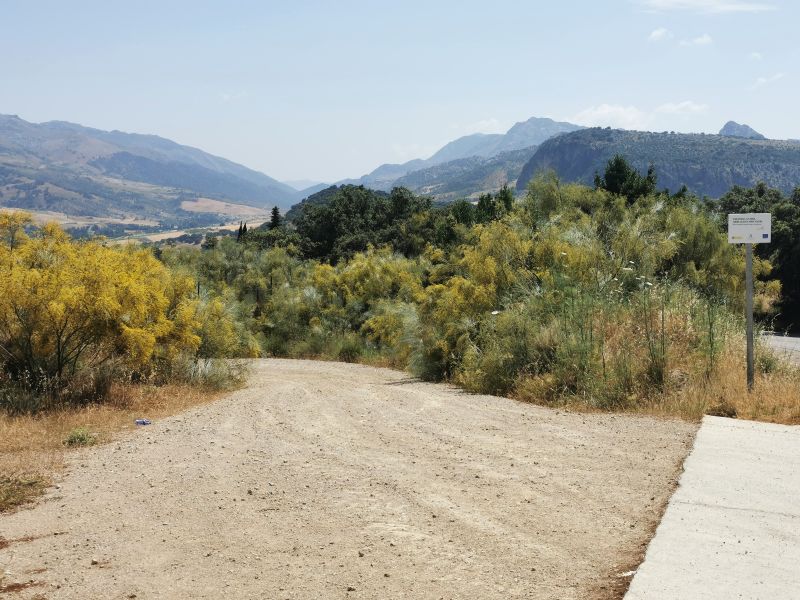

On the road back from Setenil de las Bodegas to Cortijo las Piletas & Grape vines and ancient trees in rural Ronda
Back for our last night at Cortijo Las Piletas
Leaving the little hamlet behind, we drove back to the Cortijo Las Piletas where we once again enjoyed the swimming pool and dinner in the restaurant courtyard, chatting to our fellow guests, sharing stories of our travels in the local region of Ronda. The following morning, we talked for a long time with our hostess, whose family have owned the Cortijo for several hundred year. She talked about growing up here, travelling and living elsewhere, but coming home as a family to run the Cortijo. Up until 2 years ago there was a full onsite restaurant, but these days there is the convenience of an honesty fridge, bar and kitchen facilites where guests can heat and eat their own food or purchase from the fridge, which makes for a very relaxing holiday destination where families, couples, or singles can rest, relax, and destress at their leisure, just as we did.
On the road again!!
Soon we were back on the road, driving high over the hills, through the cork forests and down into Grazalema National Park to stay 5 nights in the small ‘white village’ Villaluengo del Rosario, sitting on the steep lower slopes below the cliffs of Navazo Alto Mountain deep in the national park. Grazalema town is only a 25 minute drive (18km) from Las Piletas, but took us longer as we stopped to admire and photograph the beauty of the vistas. After a delicious lunch in Grazalema, we drove around the cliffs of the national park to Villaluenga del Rosario (approx. 20 minutes; 13km). we planned explore the region, visiting much-loved towns from our first visit in 2008, discovering new and exciting walking trails, delving further into the region’s culinary delights, and making the most of the rich cultural experiences.
Catch up on these explorations in the next story coming soon!

